As Plato says, we are born not only for ourselves, but also for our country and for our successors. So those people appear to be very fortunate, who are endowed with great talent and, after they die, are remembered and desired not only by their immediate family, but also by their descendants and successors. After all, what is more distinguished, what more worthy of glory, praise, and admiration, than man's ability to surpass other living things in excellence of nature and ability, to exceed not only mortals, but even nature itself, by study and vigilance of mind and by dint of memory?—Jacobus Publicius, Art of Memory, 11
4.1 The Humanist Education of a Quattrocento Prince
1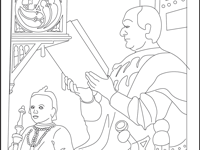 Fig. 4.1. Double Portrait of Federico and Guidobaldo da Montefeltro.
Fig. 4.1. Double Portrait of Federico and Guidobaldo da Montefeltro.
Extended Caption 7In 1431, the Venetian composer, poet, and politician Leonardo Giustiniani1 prepared a small treatise on memory, the Regulae artificialis memoriae, to complement his son's humanist training in rhetoric. Aside from its usefulness in private and commercial matters, urged Leonardo, a well-trained memory was essential for the range of oratory skills required to speak before the various organs of the Venetian government. Reflecting on his experience as capo (head) of the Council of Ten, Giustiniani emphasized: "There is no kind of case, no type, no topic, finally no precept of the entire art [of rhetoric] in which I must not be proficient, unless I wish to fail myself."2
2In a republic such as Venice, where debate and a complex process of deliberation fueled government, an appreciation for mnemonic prowess and rhetorical dexterity would be natural.3 What relevance, though, might oration (and memory) have held for Duke Federico da Montefeltro or his son, Guidobaldo? Vespasiano's biography offers several clues.
3As part of his responsibility to uphold civil law, Federico was steeped in judicial (or "forensic") oratory, in which evidence from past events is examined to arrive at a just ruling. In these matters, notes Vespasiano, Federico "gave himself entirely to his state that the people might be content, and one of the greatest of his merits was that when he heard of a quarrel he would send for the parties, and give his wits no rest till peace should be made."4 To help him arrive at sound judgments, the duke employed the counsel of a "reader," such as Maestro Lazzaro, with whom he disputed the finer points of such works as Aristotle's Ethics.5 Although Vespasiano mentions Lazzaro as evidence of the duke's continuing education, interlocutors were commonly used for dialectical inquiry. Walter Ong notes that for cultures predominantly oral in their transmission of knowledge, such as quattrocento Italy, dialogue is essential to sustain the logical analysis of complex problems.6 Moreover, since "Maestro" was a common salutation for a friar, Lazzaro could well have offered moral and spiritual counsel for Federico's assessments.7
4Another branch of rhetoric, deliberative oratory, was central to Federico's success as a military captain and to his rise in Italian politics. In deliberative rhetoric, which focused on the future ramifications of policy, one's objective was to exhort or dissuade a given audience to or from a particular end. Regarding this skill, Machiavelli observed that "a prince who is not wise will never have united councils and will not be able to bring them to unanimity for himself . . . wise counsels, from whoever they come, must necessarily be due to the prudence of the prince, and not the prudence of the prince to the good counsels received."8 Vespasiano recounts such a demonstration when, in 1467, Federico led the undermanned forces of the Italic League against the Venetian army. Addressing the shortage of their numbers, Federico "assembled the commissaries and the leaders of the army of the League to forecast the plans of the enemy, and what they themselves ought to do." Various members of the assembly maintained that they should wait for reinforcements. Having learned through reconnaissance that there were none, Federico advised his allies that they should not wait and attack the foe in his camp. "When the leaders saw what the Duke's will was, and listened to the weighty and unanswerable arguments he advanced, they replied that they were satisfied with his reasons, that they knew well in following his advice, and that they were ready, like him, to devote their lives to the saving of the army of the League."9
5Like Giustiniani's son Bernardo,10 Federico was introduced early to the third branch of rhetoric, epideictic recitation, which cultivates skills in public speaking. Meaning "fit for display," epideictic oratory was demonstrated in ceremonial occasions such as weddings and funerals and often marked a "coming out" of sorts for youths whose foundational training required that they memorize and publicly recite passages of a renowned author (typically Virgil).11 At age four, Guidobaldo's mother, Battista Sforza, delivered a Latin oration in public.12 By age eleven, Federico had impressed the Venetian Senate and Doge Francesco Foscari with a recitation during his stay in the city as a protected hostage, from February 1433 to 1434.
6 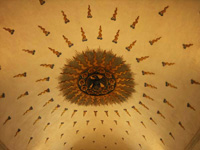 Fig. 4.2. The ducal library's ceiling at Urbino.In May 1434, a plague prompted Federico's relocation from Venice to Mantova, where he attended the humanist academy of Vittorino da Feltre, previously the chair of rhetoric at the University of Padova. In addition to his academic studies, Federico received instruction in arms with Gianfrancesco Gonzaga and was knighted by the Holy Roman Emperor Sigismondo, who was traveling to Rome to meet with Pope Eugenius IV. Two years later, Federico received formal training as a condottiere under Milan's captain general, the shrewd tactician Niccolò Piccinino.
Fig. 4.2. The ducal library's ceiling at Urbino.In May 1434, a plague prompted Federico's relocation from Venice to Mantova, where he attended the humanist academy of Vittorino da Feltre, previously the chair of rhetoric at the University of Padova. In addition to his academic studies, Federico received instruction in arms with Gianfrancesco Gonzaga and was knighted by the Holy Roman Emperor Sigismondo, who was traveling to Rome to meet with Pope Eugenius IV. Two years later, Federico received formal training as a condottiere under Milan's captain general, the shrewd tactician Niccolò Piccinino.
7 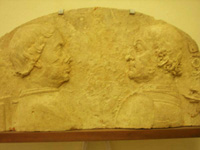 Fig. 4.3. Ottaviano degli Ubaldini and Federico da Montefeltro.Federico reveled in disputation, aiming to learn "some new thing each day."13 Like Giustiniani, Montefeltro carried worldly responsibilities, and balance was difficult to maintain, as Patricia Labalme observes, between "otium and negotium, the leisure filled with learning and the fulfillment of this learning in the activities incumbent upon a [prince]."14 To prepare their sons for this challenge, Leonardo and Federico each bequeathed a florilegium. For Bernardo, Giustiniani composed a small memory treatise with rules for crafting an inward space for thought. For Guidobaldo, Federico furnished physical chambers for contemplation.
Fig. 4.3. Ottaviano degli Ubaldini and Federico da Montefeltro.Federico reveled in disputation, aiming to learn "some new thing each day."13 Like Giustiniani, Montefeltro carried worldly responsibilities, and balance was difficult to maintain, as Patricia Labalme observes, between "otium and negotium, the leisure filled with learning and the fulfillment of this learning in the activities incumbent upon a [prince]."14 To prepare their sons for this challenge, Leonardo and Federico each bequeathed a florilegium. For Bernardo, Giustiniani composed a small memory treatise with rules for crafting an inward space for thought. For Guidobaldo, Federico furnished physical chambers for contemplation.
8Pedagogically, a florilegium enabled students to envision memory as a garden, carefully plotted for seeds and cuttings collected from other exemplary lives and works. By thoughtful ruminating on their flowers, committing them to memory, pupils assimilated the wisdom of their predecessors, transforming their forbears' words into their own.15 Conducting this wisdom through one's own life revealed the unique inner genius (ingenium) of one's character.
9 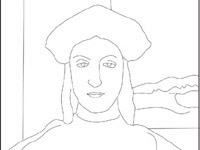 Fig. 4.4. Guidobaldo da Montefeltro.According to contemporaries, Guidobaldo da Montefeltro possessed an extraordinary intelligence (Pietro Bembo described it as "superhuman")16 cultivated by an education that continued, like his father's, into adulthood. As a youth, he was fluent in Greek and could read numerous manuscripts in the ducal library that Federico, who received a basic training in Greek grammar, could not.17 Notably, Guidobaldo was admired for his "remarkable powers of memory," which, as James Dennistoun relates, "by judicious and habitual exercise were extended with advancing manhood."18 Vespasiano admired the duke's mnemonic skill at an early stage in its development: "He [Guidobaldo] had a marvellous memory, of which I can give numerous examples; for once, when Signor Ottaviano put Ptolemy before him, he knew how to point out all the regions of the Earth so that, when he was asked for any place or district, he found it at once and knew the distance of one place from another. The Duke possessed a Bible with historical comments, the events of each book being narrated, and there was no name or place that the young prince did not know, even the unfamiliar names in Hebrew."19 It is impossible, of course, to determine how much Vespasiano and Bembo may have rhetorically amplified Guidobaldo's talents; nonetheless, the importance bestowed on mnemonic prowess is emphatic. In 1450, Bishop Aeneas Silvius Piccolomini (who as Pope Pius II became one of Federico's most influential patrons) wrote: "When . . . speech is considered as an art, we find that it is the function of grammar to order its expression; of dialectic to give it point; of rhetoric to illustrate it; of philosophy to perfect it. But before entering upon this in detail we must first insist upon the overwhelming importance of memory, which is in truth the first condition of capacity for letters. A boy should learn without effort, retain with accuracy, and reproduce easily. Rightly is memory called 'the nursing mother of learning.'"20
Fig. 4.4. Guidobaldo da Montefeltro.According to contemporaries, Guidobaldo da Montefeltro possessed an extraordinary intelligence (Pietro Bembo described it as "superhuman")16 cultivated by an education that continued, like his father's, into adulthood. As a youth, he was fluent in Greek and could read numerous manuscripts in the ducal library that Federico, who received a basic training in Greek grammar, could not.17 Notably, Guidobaldo was admired for his "remarkable powers of memory," which, as James Dennistoun relates, "by judicious and habitual exercise were extended with advancing manhood."18 Vespasiano admired the duke's mnemonic skill at an early stage in its development: "He [Guidobaldo] had a marvellous memory, of which I can give numerous examples; for once, when Signor Ottaviano put Ptolemy before him, he knew how to point out all the regions of the Earth so that, when he was asked for any place or district, he found it at once and knew the distance of one place from another. The Duke possessed a Bible with historical comments, the events of each book being narrated, and there was no name or place that the young prince did not know, even the unfamiliar names in Hebrew."19 It is impossible, of course, to determine how much Vespasiano and Bembo may have rhetorically amplified Guidobaldo's talents; nonetheless, the importance bestowed on mnemonic prowess is emphatic. In 1450, Bishop Aeneas Silvius Piccolomini (who as Pope Pius II became one of Federico's most influential patrons) wrote: "When . . . speech is considered as an art, we find that it is the function of grammar to order its expression; of dialectic to give it point; of rhetoric to illustrate it; of philosophy to perfect it. But before entering upon this in detail we must first insist upon the overwhelming importance of memory, which is in truth the first condition of capacity for letters. A boy should learn without effort, retain with accuracy, and reproduce easily. Rightly is memory called 'the nursing mother of learning.'"20
10Piccolomini's personification of memory as a "nursing mother" is curious, especially considered alongside the text from the Gubbio studiolo,21 which refers its studious reader to a "Venerable Mother" (Venerande Matris). Previous interpretations of Veterani's distych22 have assumed that Matris, like the terms parent and foster mother found elsewhere in the passage, refers to the goddesses depicted in the Liberal Arts portraits. Although parentis clearly does refer to these "parental" figures (to whom Guidobaldo and Federico genuflect), Piccolomini's comment suggests that Venerable Mother—and possibly Foster Mother as well—alludes instead to Mnemosyne, the Greek goddess of memory.23 A similar comment by Publicius supports this observation: "Our poets have referred to her [Memory/Mnemosyne] as the universal parent and most faithful preserver of all faculties and arts worthy of divine and human study, as the basis and glory of divine and human genius, and even as the mother of the muses."24
11References to memory and the muses enlace the Montefeltro studioli. Investigation of such allusions allows us to better appreciate the workings of a quattrocento mind and the complementary roles of architecture and memory in its formation. The basic ingredient of humanist scholarship, memorization by heart, was steeped in the ancient tradition of architectural mnemonics,25 a practice (or practices) that called for the careful arrangement of images—representing ideas and arguments—in rooms, palaces, gardens, and cities constructed in the mind. For this training, architecture and its ornament offered a ductile medium in forming personal character and communal ethics. Labalme observes that for Federico and Guidobaldo, Leonardo and Bernardo, "an oration was the demonstration of reason in politics, and an oratio was to ratio as convivere was to vivere."26 As a student fashioned an "ark" for memory within the heart, he or she refined an ability to communicate with and live among others. Building on this tradition, Christian theologians conceived sancta memoria, a medieval practice of meditation in which mechanisms and processes of architectural construction figured as metaphors for spiritual edification. However, before invisible palaces and cities could be constructed, or the soul "lifted" in divine contemplation, it was necessary to secure proper foundations. Since young students are not yet prepared to reason, as Aristotle and Castiglione assert, they must first receive training in appropriate mental and physical habits.
^top4.2 On Right Habits
Gaspar: I should like to know [if the prince's mind] ought to be first imbued and implanted with the virtues through the reason and intelligence or through practice.
Ottaviano: Care must be taken of the body earlier than of the soul, and of appetite earlier than of reason. . . . We ought, therefore, first to teach through habit, which is able to govern the as yet unreasoning appetites and to direct them toward the good by means of that fair use; next we ought to establish them through the understanding, which although it shows its light more tardily, still furnishes a mode of making the virtues more perfectly fruitful to one whose mind is well trained by practice.—Baldassare Castiglione, Book of the Courtier, 265
12 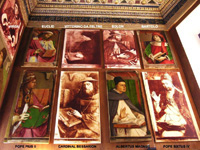 Fig. 4.5. Vittorino da Feltre, Federico's teacher, among the illustrious men in the Urbino studiolo.If you were caught slouching at the Academy of Ca' Zoiosa,27 Vittorino da Feltre would draw a chalk circle around your feet and, as a lesson to your classmates, command you to assume the physical posture appropriate to a young scholar. You would then be instructed to remain motionless for a specified time. Although this exercise of authority by da Feltre—bestowed on him by his patron, Gianfrancesco Gonzaga, marquess of Mantova—may appear somewhat obtuse, it shows how strongly humanist educators believed that the outward expressions of bodily and social habits demonstrated the mind's workings.
Fig. 4.5. Vittorino da Feltre, Federico's teacher, among the illustrious men in the Urbino studiolo.If you were caught slouching at the Academy of Ca' Zoiosa,27 Vittorino da Feltre would draw a chalk circle around your feet and, as a lesson to your classmates, command you to assume the physical posture appropriate to a young scholar. You would then be instructed to remain motionless for a specified time. Although this exercise of authority by da Feltre—bestowed on him by his patron, Gianfrancesco Gonzaga, marquess of Mantova—may appear somewhat obtuse, it shows how strongly humanist educators believed that the outward expressions of bodily and social habits demonstrated the mind's workings.
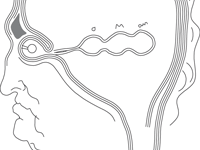 Fig. 4.6. Section of human head after Leonardo. Fig. 4.6. Section of human head after Leonardo.Extended Caption 8 |
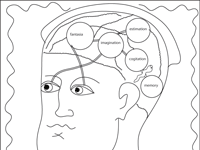 Fig. 4.7. Diagram of human mind after Galen. Fig. 4.7. Diagram of human mind after Galen.Extended Caption 8 |
 Fig. 4.8. Diagram of human mind after Lokhorst and Kaitaro's model of Costa ben Luca. Fig. 4.8. Diagram of human mind after Lokhorst and Kaitaro's model of Costa ben Luca.Extended Caption 8 |
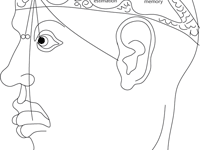 Fig. 4.9. Diagram of human mind after Avicenna. Fig. 4.9. Diagram of human mind after Avicenna.Extended Caption 8 |
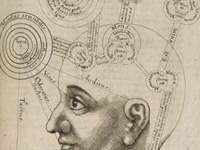 Fig. 4.10. Diagram of the human mind. Fig. 4.10. Diagram of the human mind.Extended Caption 8 |
|
13Founded in Mantova by da Feltre in 1423, Ca' Zoiosa was conceived as a setting in which to instill the Platonic principles of gymnastics for the body and music for the mind to repair and refine the constitutions of the flabby, phlegmatic Prince Ludovico Gonzaga and his nervous brother, Carlo.28 The academy soon became an educational center for the future ruling elite of quattrocento Italy. As compared with the sedentary lives led by pupils of the monastic orders, da Feltre directed Ca' Zoiosa as a gymnasium, incorporating vigorous exercise with a stringent diet and rigorous training in letters, numbers, and the memory.29 Although Vittorino taught in a Socratic manner, leaving no writings of his own for posterity, he possessed a fine library that was openly available to his students.30
14Like Aristotle, da Feltre's objective for the academy was to produce not scholars but complete citizens of a character refined by moderation and grace. He urged: "Not everyone is obliged to excel in philosophy, medicine, or the law, nor are all equally favored by nature: but all are destined to live in society and to practice virtue."31 Although the humanist education at Ca' Zoiosa included grammar (Latin and Greek), dialectics and rhetoric, mathematics, and philosophy, it was above all a practical education designed to foster diplomatic skills in future leaders. In this context the cultivation of elegance, the capacity to articulate connections with grace, must be distinguished from eloquence. Whereas eloquence is traditionally associated with the art of rhetoric as a "practice . . . of expressing thought with fluency, force, and appropriateness so as to appeal to the reason or move the feelings," the catchword of this phrase is appropriateness.32 Da Feltre warns: "There is . . . nothing that may eventually do greater harm to a city than eloquence, for . . . when it is possessed by evil men, they may use it to stir up trouble and to corrupt public manners."33
15To guard against such discordant behavior, da Feltre and his colleagues sought to establish the feeling of right action in their students by inculcating "right habits" in body and mind.34 "Since it is obvious," Aristotle writes in Politics, "that education by habit-forming must precede education by reasoned instruction, and that education of the body must precede that of the intellect, it is clear that we must subject our children to gymnastics and to physical training; the former produces a certain condition of the body, the latter its actions."35 Following Pier Paolo Vergerius, who urged that students should be trained in feats of courage and endurance, Piccolomini recommends that instructors prepare their students for hardship, implanting a certain "hardness" of character capable of rejecting excessive sleep and other indulgences (such as soft beds and silk underclothing) that were believed to enervate body and mind.36 Regarding diet, he continues, since "the aim of eating is to strengthen the frame," one should avoid cakes and sweets, as well as small birds or eels, "which are for the delicate and weakly." Although one should generally refuse that food which "needlessly taxes digestion and so impairs mental activity," a young student—particularly a young condottiere such as Guidobaldo—could not be permitted to develop a finicky palate. Piccolomini warns that a boy who is destined to face life "in the camp or in the forest, should so discipline his appetite that he may eat even beef."37
16 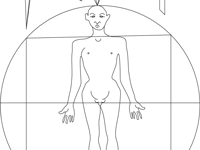 Fig. 4.11. Instrumental demonstration of rectitude.
Fig. 4.11. Instrumental demonstration of rectitude.
Extended Caption 9At Ca' Zoiosa, Vittorino followed the advice of Aristotle and Plato, encouraging gymnastics, music, and dancing as aids to the inner harmony of the soul and its corporeal expression.38 Humanists considered music essential to education: Vergerius notes that the ancient Greeks had denied the title of "educated" to anyone who could not sing or play a musical instrument.39 Castiglione concurs, adding that music induces a "fresh and good habit of mind and an habitual tendency to virtue, which renders the soul more capable of happiness, just as bodily exercise renders the body more robust."40 Music, like dance, was enthusiastically sponsored by Federico and Guidobaldo.41
17  Fig. 4.12. Perspectival "butterfly," after missing figure at Gubbio studiolo.
Fig. 4.12. Perspectival "butterfly," after missing figure at Gubbio studiolo.
Extended Caption 10Grace in expression was refined by grammar, which educators considered the foundation of knowledge. Unless grammar and fluid enunciation were learned thoroughly, according to Battista Guarino, one's education was considered "a house built on treacherous ground."42 In a letter written in 1405 to Count Guidantonio da Montefeltro regarding the education of his sister Battista,43 Leonardo Bruni states: "unless this solid basis [of Latin] be secured it is useless to attempt to rear an enduring edifice."44 Commenced at age six or seven, grammar trained a student in the rudiments of language while refining habits of public presentation. Piccolomini emphasizes: "Too much importance can hardly be attached to right bearing and gesture. Childish habits of playing with the lips and features should be early controlled. A boy should be taught to hold his head erect, to look straight and fearlessly before him, and to bear himself with dignity, whether walking, standing, or sitting."45 Grammar also exercised the memory and introduced the student to the works of classical authors by a process described by Iris Origo:
In the grammar lesson the master would dictate the list of words to be learned by heart and their declensions, commenting on any grammatical difficulty as it arose. When the time came for reading the Greek or Latin text itself, the master would first read a passage aloud, explaining and commenting, followed by each pupil reading the same passage in turn, until not only his translation but his enunciation and expression were considered perfect. Finally each passage was learned by heart. Every child was taught to read aloud agreeably and clearly, "not muttering in his teeth," and without uncouth gestures or making faces.46
While learning the rudiments of epideictic presentation in a "parrot-like" manner, a student committed exemplary passages of poetry and literature to memory.
18 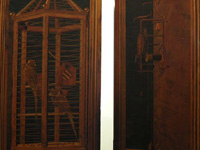 Fig. 4.13. Papagalli and mechanical clock, Urbino studiolo.
Fig. 4.13. Papagalli and mechanical clock, Urbino studiolo.
Extended Caption 11Exercises in the progymnasmata sharpened elocution, fortifying the student's memory with ennobling passages of poetry and literature like those arrayed in the studioli. At Gubbio, the extended quotation of Virgil's Aeneid offered Guidobaldo a meditation on human mortality and the immortality of human valor. A similar message is conveyed at Urbino by the maxim "virtutibus itur ad astra" (with virtue, man scales the stars), whose elaboration on Virgil furnished the young prince with an example of rhetorical gnome.47 Inches away we find "Hony soit qui mal y pense" (evil be to him who evil thinks), a phrase that encircles the Order of the Garter in both studioli. Additionally, the encomia inscribed in the Urbino portraits provided exemplary ingredients for epideictic oration.48
19 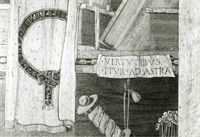 Fig. 4.14. Detail of north wall, Urbino studiolo.In spite of the sobering tenor of "uprightness" in humanist pedagogical writings, the techniques practiced in schools such as Ca' Zoiosa, especially with younger students, are more accurately characterized as jocoserious. To establish an enjoyment of learning alongside the procurement of right habits, teachers devised educational games for their students. For example, colored letter cards (the quattrocento equivalent of "flash cards") introduced the youngest to the alphabet and assisted in the instruction of grammar. In the dedicatory preface to On Caring for the Health of Students, dedicated to Lorenzo de' Medici, Marsilio Ficino urges: "Our intention is to help with physical strength those who are weak. This must not be done in a heavy, serious style, but free and joyful. . . . For Bacchus heals, perhaps even more healthfully, with some of his nourishing wine and his happy carefreeness, than Apollo does with his herbs and charms."49 Dora Thornton has detailed how "reading aloud and studying could flow into other, more obviously sociable activities," such as singing and dancing. The poet Angelo Poliziano, a former student of Ficino's who tutored Lorenzo de' Medici's son, Piero, describes such an event in a letter: "At San Miniato yesterday evening we began to read a little Saint Augustine. And this at last turned into making music, leaping up and polishing a certain model of dancing practiced here."50
Fig. 4.14. Detail of north wall, Urbino studiolo.In spite of the sobering tenor of "uprightness" in humanist pedagogical writings, the techniques practiced in schools such as Ca' Zoiosa, especially with younger students, are more accurately characterized as jocoserious. To establish an enjoyment of learning alongside the procurement of right habits, teachers devised educational games for their students. For example, colored letter cards (the quattrocento equivalent of "flash cards") introduced the youngest to the alphabet and assisted in the instruction of grammar. In the dedicatory preface to On Caring for the Health of Students, dedicated to Lorenzo de' Medici, Marsilio Ficino urges: "Our intention is to help with physical strength those who are weak. This must not be done in a heavy, serious style, but free and joyful. . . . For Bacchus heals, perhaps even more healthfully, with some of his nourishing wine and his happy carefreeness, than Apollo does with his herbs and charms."49 Dora Thornton has detailed how "reading aloud and studying could flow into other, more obviously sociable activities," such as singing and dancing. The poet Angelo Poliziano, a former student of Ficino's who tutored Lorenzo de' Medici's son, Piero, describes such an event in a letter: "At San Miniato yesterday evening we began to read a little Saint Augustine. And this at last turned into making music, leaping up and polishing a certain model of dancing practiced here."50
20Educational games, steeped in ancient sources and Christian mores, established a common figural language among quattrocento and cinquecento courts, fueling such forms of entertainment as the Game of Emblems mentioned by Castiglione at the outset of The Book of the Courtier.51 In a tradition extending to Horace and Plutarch, painting had been referred to as mute poetry (muta poesis) whereas poets were seen to produce pictures that speak (pictura loquens). The commonplace interplay of verbal and visual figures is transparently expressed in Castiglione's dissimulating description of his own treatise as "not by the hand of Raphael or Michelangelo, but of a humble painter, who knows only how to trace the chief lines, and cannot adorn truth with bright colouring, or by perspective art make that which is not seem to be."52
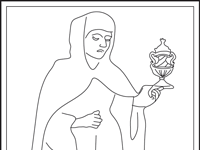 Fig. 4.15. Gramatica XXI after traditional Tarocchi di Mantegna. Fig. 4.15. Gramatica XXI after traditional Tarocchi di Mantegna.Extended Caption 12 |
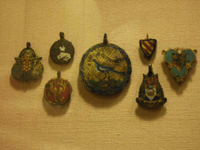 Fig. 4.16. Late quattrocento emblems worn with armor. Fig. 4.16. Late quattrocento emblems worn with armor.Extended Caption 12 |
21 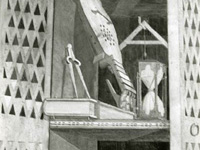 Fig. 4.17. Ingenioq cabinet, Gubbio studiolo.
Fig. 4.17. Ingenioq cabinet, Gubbio studiolo.
Extended Caption 13Another telling example of this interplay is found in the northeast corner of the Gubbio studiolo, in the cabinet of measuring devices surmounted by the word INGENIOQ. Defined as natural talent or "prerational" genius, ingenium was held in contrast to the wisdom gained from practice and experience, and considered a divine stamp on the soul delivered at the instant of one's birth. Innate talent was as mysterious to the quattrocento as it was for Vitruvius, who describes it as "hidden in the breast."53 Ficino reminds his readers of Aquinas's claim in Contra gentiles that "something in our bodies is imprinted by the heavenly bodies, whose gift we can then use to decide what is good, even if we do not know its reason or purpose."54 By this heavenly aspect, one person might be a soldier gifted in conquering, a farmer in planting, or a doctor in healing. A teacher's methods were tuned to reveal and cultivate the unique character hidden within each student while impressing those habits of uprightness that would guide his or her ingenium to the common good. Instruments of the architect assisted in this process, supplying da Feltre and his colleagues with metaphors of justice and moral rectitude. Castiglione writes:
The prince ought not only to be good, but also to make others good, like that square used by architects, which not only is straight and true itself, but also makes straight and true all things to which it is applied. And a very great proof that the prince is good is when his people are good, because the prince's life is law and preceptress to his subjects, and upon his behaviour all the others must needs depend. . . . Hence if the prince would perform these duties rightly, he must devote every study and diligence to wisdom; then he must set before himself and follow steadfastly in everything the law of reason (unwritten on paper or metal, but graven upon his own mind), to the end that it may be not only familiar to him, but ingrained in him.55
22What makes one person "quick" and another "slow"? Traditionally, memorization was considered an active exercise of the intellect:56 mnemonic torpor was explained physiologically and considered rectifiable by natural and artificial procedures.57 Costa ben Luca attributed mental quickness to the speed with which one could raise and lower the vermis, redirecting the flow of spirits among the chambers in the brain: "it is slower in some, which causes a slow memory and slow responses in those who have to think hard."58 Ibn al-Jazzar (by way of Constantinus Africanus) concurred: "with some people [pneuma] goes fast and because of that these people are sharp-witted and quick at repartee."59 If the psychical pneuma is too cold, Publicius adds, it cannot cross over to the posterior ventricle, thus rendering the memory "dull and languid."60
23To compensate for such deficiencies, doctors and educators recommended a broad range of activities and elixirs. Good posture and exercise, Piccolomini urges, "not only cultivates grace of attitude, but secures the healthy play of our bodily organs and establishes the constitution."61 Uprightness in elocution was not a matter of aesthetic pretense but a physiological condition allowing for an unhampered flow of spirits throughout the body, particularly among the liver, heart, and brain, which according to Avicenna and Galen were the respective seats of the natural, vital and animal spirits.62 More generally, upright posture was believed to have enabled humans to observe the heavens and wonder beyond the mortal coil.
24Publicius and Ficino provide numerous recipes and regimens for enhancing the "natural" memory. In addition to exercise, bathing, healthful diet, and moderate sex, Publicius includes a sneezing powder recommended by Constantinus Africanus that is made from the gall of crane and elder oil and said to cure lethargy.63 Ficino describes how to use the gifts of incense, myrrh, and gold leaf to make an elixir for the elderly that will "beyond any doubt, protect your natural humor from putrefaction." He assures that this medicine fortifies all three spirits—natural, vital, and animal—while sharpening the mind and strengthening memory.64
25How might artificial memory have amplified one's natural capacities? Leonardo Giustiniani characterizes its role in preparing speeches: "In envisioning an oration, or embassy, or proofs, or opinions, it is necessary that we comprehend briefly not words but the total idea and that we give to it its own image." If an oration is too long, "it should be divided and each single part should be excellently shaped and put in a certain place in right order, that is, so that one thought may follow another without interruption or disturbance."65 Giustiniani adds that mnemonic images offer a form of shorthand during debate, enabling one cryptically to fashion a reply "jotted down in the form of a picture," while the opponent was yet speaking. What were these "pictures" like? Often, they combined visual and verbal figures like the alphamnemonic ciphers, found in each studiolo, which were recommended by Publicius and popularized in the subsequent century.66
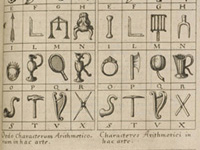 Fig. 4.18. Alphabetic mnemonics. Fig. 4.18. Alphabetic mnemonics.Extended Caption 14 |
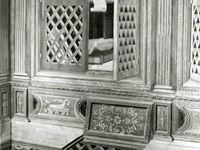 Fig. 4.19. Cabinet with hunting horn, Gubbio studiolo. Fig. 4.19. Cabinet with hunting horn, Gubbio studiolo.Extended Caption 14 |
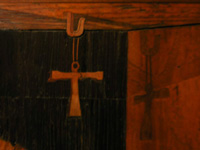 Fig. 4.20. Tau-shaped tuning key, Gubbio studiolo. Fig. 4.20. Tau-shaped tuning key, Gubbio studiolo.Extended Caption 14 |
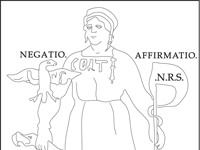 Fig. 4.21. Cipher of Gramatica. Fig. 4.21. Cipher of Gramatica.Extended Caption 14 |
26 Material crafts offered a model for mental habits due to their instruction of natural ability. Similarly, memory building exercised one's mental ingenium, a procedure that Aristotle considered central in the development of ethical character.67 Mastery of an art, material or mental, was thus perceived to cultivate prudence, since the accumulation of experience enhances one's foresight and refinement. As a result, writers such as Hugh of St. Victor seized on the arts—liberal and mechanical—as guides to wisdom, praising the products of human reason for their infinite variety.68
27 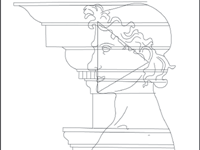 Fig. 4.22. Superimposition of human and building profiles.By a similar reciprocity, da Feltre and his fellow teachers believed personal habits to influence social relations and, by extension, the urbane fabric of buildings and the city. "Style" in quattrocento architecture was evaluated not by historicizing categories like "baroque," "modernist," or "postmodern" but rather in terms of appropriateness. Architectonically and rhetorically, ornamentation offered provisions for thought, supplying memorable figures of expression.69 While ancient Greeks spoke of sensitivity to kairos, or "occasion,"70 Romans were keenly aware of decorum, by which the figures and ornaments of an oration were tuned to a specific audience in a selected setting for a particular occasion. Recalling Giustiniani's comment about the breadth of rhetorical skills exercised in politics, sensitivity to kairos and decorum reflected two symbiotically related humanistic objectives: to possess a copiously stocked memory and an ability to convey its store to an audience in a fitting manner. In his letter to Guidantonio da Montefeltro, Leonardo Bruni emphasizes that the desire to accumulate knowledge and experience must be matched by an ability to express one's learning gracefully in a manner that befits the audience and occasion. Like the clothing of thoughts and buildings, clothing of the body was also evaluated according to appropriateness. Vergerius states: "We must have due regard to our dress and its suitability to time, place, and circumstance."71
Fig. 4.22. Superimposition of human and building profiles.By a similar reciprocity, da Feltre and his fellow teachers believed personal habits to influence social relations and, by extension, the urbane fabric of buildings and the city. "Style" in quattrocento architecture was evaluated not by historicizing categories like "baroque," "modernist," or "postmodern" but rather in terms of appropriateness. Architectonically and rhetorically, ornamentation offered provisions for thought, supplying memorable figures of expression.69 While ancient Greeks spoke of sensitivity to kairos, or "occasion,"70 Romans were keenly aware of decorum, by which the figures and ornaments of an oration were tuned to a specific audience in a selected setting for a particular occasion. Recalling Giustiniani's comment about the breadth of rhetorical skills exercised in politics, sensitivity to kairos and decorum reflected two symbiotically related humanistic objectives: to possess a copiously stocked memory and an ability to convey its store to an audience in a fitting manner. In his letter to Guidantonio da Montefeltro, Leonardo Bruni emphasizes that the desire to accumulate knowledge and experience must be matched by an ability to express one's learning gracefully in a manner that befits the audience and occasion. Like the clothing of thoughts and buildings, clothing of the body was also evaluated according to appropriateness. Vergerius states: "We must have due regard to our dress and its suitability to time, place, and circumstance."71
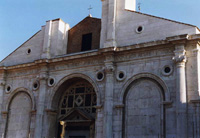 Fig. 4.23. The Tempio Malatestiana, Rimini. Fig. 4.23. The Tempio Malatestiana, Rimini. |
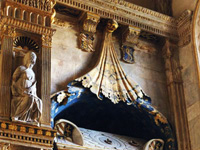 Fig. 4.24. Sarcophagus of Sigismondo Malatesta, Tempio Malatestiana. Fig. 4.24. Sarcophagus of Sigismondo Malatesta, Tempio Malatestiana. |
28The ethos of rhetorical ornamentation directly influenced architectural ornament. In the early 1450s, Sigismondo Malatesta commissioned Alberti to transform an existing Franciscan church in Rimini into a family mausoleum. Centering on the structure's exterior, Alberti's recommendations included an objection to the patron's desire for round windows in the cupola. In a 1454 letter written from Rome to Matteo de' Pasti, the project manager, Alberti bluntly rejects the round windows, noting that one would "never, never find" such an arrangement among ancient buildings except for temples dedicated to Jupiter and Apollo, who are "patrons of light."72 Alberti describes the round windows in these temples as "tonsures" (akin to the oculus of the Roman Pantheon), in which case the openings would be visible only from the building's interior. Maria Pernis and Laurie Adams suggest that Alberti criticized the design because he believed that "round windows would identify the Tempio Malatestiano as a pagan structure rather than as a church remodeled along humanist lines."73 One may be even more precise. Alberti objected to the windows because they did not exhibit the decorum appropriate to the structure's civic presence and the modes of its inhabitation: "the design [of openings] should suit the building, whatever its size or shape."74 Significantly, Alberti does not mention Sigismondo in the letter, referring de' Pasti instead to "Lord Robert," Malatesta's son. Owing to a downturn in Sigismondo's fortunes, precipitated by his notoriety and the bitter rivalry with Federico da Montefeltro, the exterior of the Tempio Malatestiano was never completed. Capitalizing on his neighbor's demise, Federico subsequently hired many of the stonecutters for the Tempio Malatestiano to work on the ducal palace at Urbino.
29
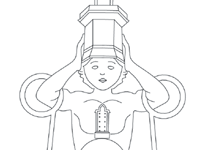 Fig. 4.25. Superimposition of fortress and human body.
Fig. 4.25. Superimposition of fortress and human body.
Extended Caption 15For Federico, who accumulated wealth and prestige through military campaigns conducted for scholarly patrons,75 the workings of the body and mind were complementary, if not interdependent. Architecture, by its union of practical and theoretical wisdom in military, public, and domestic applications, provided a powerful metaphor of governance. In Politics, Aristotle states: "The ruler must have moral virtue in its entirety; for his function is in its fullest sense that of a master-craftsman [Architekton]."76 Echoing Aristotle (and Alberti), Machiavelli emphasized the political connotations of architectural prudence: "He who does not lay his foundations [of governance] beforehand may by great abilities do so afterwards, although with great trouble to the architect [prince] and danger to the building."77 Recalling the preparations for Guidobaldo's rule, we see how architectonic metaphors underlay a prince's education and political visions. Next we consider how they provisioned his thought process.
4.3 On Architecture and Memory
Can it be that the memory is not present to itself in its own right but only by means of an image of itself?—Augustine, Confessions, 10.15
30An examination of the Montefeltro studioli offers insight into the roles that the discipline of architecture played in shaping thought in the late Italian quattrocento. Traditionally, architecture had provided a concrete organizational model for learning and memory training, with the practice of constructing buildings serving as a medium and mediator of human knowledge. As a mode of expression uniquely conducive to rhetorical and material investigation, architecture enabled the mind to ask itself—even to conceive of asking itself—such experiential dilemmas as described by Augustine: "The power of the memory is prodigious, my God, it is a vast, immeasurable sanctuary. Who can plumb its depths? And yet it is a faculty of my soul. Although it is part of my nature, I cannot understand all that I am. This means, then, that the mind is too narrow to contain itself entirely. But where is that part of it which it does not itself contain? How, then, can it be part of it, if it is not contained in it? I am lost in wonder when I consider this problem. It bewilders me."78 Because of its range of mental and material procedures, architecture has been historically positioned "between" the liberal and mechanical arts, twin modes of wisdom often characterized as theory and practice.79 By its auspicious capacity to embody these twins,80 architecture has offered a ductile medium for conveying ideas between the imagination and the built environment. Providing containment through the choreography of figurative skills, verbal and visual, architecture furnishes the mind with metaphoric vessels and mechanisms by which to preserve and interpret the materials of experience.81 Augustine relates: "The sky, the earth, and the sea . . . all the events that I remember, whether they are things that have happened to me or things that I have heard from others. . . . All this goes on inside me, in the vast cloisters of my memory."82
31Augustine's comparison of memory to a sanctuary and cloisters reflects the deep association between architecture and memory. This kinship stems from a fundamental awareness that in order to preserve the stuff of memory for future recollection, it must first be collected and stored in a manner that enables the mind's eye to compose and recombine the materials of experience at will, as a given situation demands.83 Through its tactics of containment, architecture helps the mind envision a spatial matrix that expresses and recursively facilitates mnemonic practices. By constructing this matrix, or model, of the mind's workings within the mind itself—the kernel of Augustine's wonder and bewilderment84—one edifies oneself as the container of the universe of one's experience. Consequently, architecture has provided a legacy of educators with a model for learning, furnishing mnemonic armatures that help the mind render knowledge and experience accessible and comprehensible.85
32Before our experiences may be stored as the stuff of memory, however, they must be presented in a form that the mind can grasp. In De memoria, Aristotle describes how images offer a vehicle for thought: "When we think of the concept 'triangle,' we think of a[n image of a] triangle, even though we understand our image to be a conceptual model, 'as in drawing a diagram.'"86 For Aristotle, memories are ideas, abstracted from sensual stimuli, that the mind can apprehend only through a representative image.87 Augustine echoes this thought: "The things which we sense do not enter the memory themselves, but their images are there ready to present themselves to our thoughts when we recall them."88
33Although it is now commonly held that all of the senses contribute to the formation of personal memory, even triggering the confounding episodes best described as synesthetic, the faculty of vision has been traditionally considered the central agency—the "noble sense"—of memory and reason. Alberti notes: "It is remarkable how some natural instinct allows each of us, learned and ignorant alike, to sense immediately what is right or wrong in the execution and design of a work. It is precisely with regard to such matters that sight shows itself the keenest of all the senses."89 Luca Pacioli, a polymath who was a guest of Alberti's in Rome and later dedicated a treatise on mathematics to Duke Guidobaldo, similarly declared: "Even the vulgar agree that the eye is the first portal through which the intellect understands and tastes."90
34  Fig. 4.26. Drawing of medal. As gateway to the intellect and sapientia,91 the eye has been traditionally perceived as a central locus of personal character. Matthew (6:22–23) proclaims the eye as the "lamp of the body": ". . . if the light inside you is darkness, what darkness that will be." Leonardo da Vinci, who shared quarters with Francesco di Giorgio in Pavia92 and illustrated Pacioli's treatise on the divine proportion, concurs:
Fig. 4.26. Drawing of medal. As gateway to the intellect and sapientia,91 the eye has been traditionally perceived as a central locus of personal character. Matthew (6:22–23) proclaims the eye as the "lamp of the body": ". . . if the light inside you is darkness, what darkness that will be." Leonardo da Vinci, who shared quarters with Francesco di Giorgio in Pavia92 and illustrated Pacioli's treatise on the divine proportion, concurs:
Whoever loses vision loses the sight and beauty of the universe, and remains like one buried alive in a tomb in which he has only movement and life. Now, do you not see that the eye embraces the beauty of the whole world? It is master of astronomy, it makes cosmography, counsels and corrects all the human arts, moves men to different parts of this world, is the prince of mathematics; its sciences are most certain, it has measured the height and size of the stars, generated architecture, perspective and divine painting. . . . The eye is the window of the human body through which it examines its way in the world and enjoys the beauty of the world. Because of this the soul is content in its human prison, and without sight this human prison is its torment; by means of the eye human industry has found fire, so that the eye itself reacquired that which darkness had previously taken away. The eye has ornamented nature with agriculture, and delightful gardens. But what need is there to extend myself in such heights and lengths of discourse? What has not been done by the eye? It moves men from east to west, has found navigation; it surpasses nature because things made by nature are finite, and the works that the eye commands of the hands are infinite, as the painter shows in his feigning of infinite forms of animals, herbs, plants and places.93
35While studying the imagery of the studioli, one must distinguish between mnemotechniques, which were traditional practices of crafting memory, and semiotics, "the science of communication studied through the interpretation of signs and symbols."94 Despite their pivotal role in preserving sensuous perceptions, mnemonic images do not inherently mean anything. Reduced to their essence, they offer mental switches, or conduits, that assist one to constellate ideas from stored experiences to fit the circumstances at hand.95 This amplifies the value of artistic works like the studioli since, from Aristotle on, memory treatises concur that corporeal images are necessary for an idea or experience to be fixed securely in the mind and readily available for recollection. In De visione Dei, Nicholas of Cusa asserts: "The human intellect, if it is to find expression in action, require[s] images [phantasmata], and images cannot be had without the senses, and senses subsist not without a body."96 Likewise, Publicius states: "Simple and spiritual ideas which are aided by no bodily likenesses slip very quickly out of memory."97
36Over time, images accumulate associations as the residue of prolonged use and familiarity. Iconography affords a valuable point of entry into emblematic works like the studioli.98 Often, though, iconographic analysis attributes a direct correspondence between image and meaning, emphasizing the intellectual value of an image at the expense of its experiential qualities. This is problematic, since the intrinsic value of a mnemonic image was its flexibility in conveying different meanings to various people under ever-changing circumstances. Moreover, the emotional impact of an image—its capacity to move a viewer figuratively and literally, inwardly as well as outwardly—was quintessential to its usefulness in memory craft.99
37The image of caged birds, prominently displayed in both studioli, provided the Montefeltro dukes with a range of associations. In addition to evoking eloquence, papagalli held biographical significance for Federico. On 5 March 1475, the duke received the Golden Rose from Pope Sixtus IV at the Vatican Palace in the Camera Papagalli, a room next to the pope's bedroom reserved for confidential negotiations.100 Compositionally, papagalli also provided the intarsists with an opportunity to display their ingenuity. At Gubbio, the anamorphic distortion of the octagonal birdcage reveals a centralized standpoint for appreciating the chamber's perspectival construction. Furthermore, certain woods used by intarsists hosted a green fungus that could be used as an ornamental flourish. At Gubbio, verdigris poplar is found in the papagallo's tail feathers: at Urbino it appears in the duke's monogram.
38More metaphorically, in Plato's Theatetus, an inquiry on the nature of knowledge, Socrates compares the memory to an aviary: "Let us make in each soul a sort of aviary of all kinds of birds. . . . When anyone takes possession of a piece of knowledge [a bird] and shuts it up in the pen, we should say that he has learned or has found . . . knowledge; and knowing, we should say, is this."101 Unfortunately, although a cage may seem a logical metaphor for memory, if the "birds of knowledge" are permitted to fly about at will, even within the confines of our own "cage," we might very well reach in and retrieve a dove instead of the parrot we had sought. To prevent such mnemonic misapprehensions, it is vital to design memory structures carefully. As Hugh of St. Victor warns, "Confusion is the mother of ignorance and forgetfulness, but orderly arrangement illuminates the intelligence and firms up memory."102
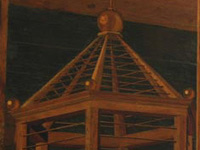 Fig. 4.27. Papagalli and cage, Urbino studiolo. Fig. 4.27. Papagalli and cage, Urbino studiolo.Extended Caption 16 |
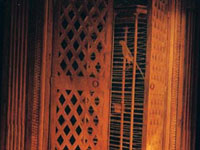 Fig. 4.28. Papagallo and birdcage, Gubbio studiolo. Fig. 4.28. Papagallo and birdcage, Gubbio studiolo.Extended Caption 16 |
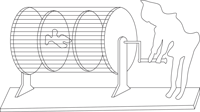 Fig. 4.29. Image of a spinning birdcage. Fig. 4.29. Image of a spinning birdcage.Extended Caption 16 |
|
39 A retracing of mnemonic models reveals a polithetic evolution in design, from simple architectonic containment toward increasingly elaborate strategies. As demonstrated by the studiolo-within-a-studiolo at Urbino, more complex models often incorporated earlier models into their design through such extended memory techniques as "nesting" or "concatenation."103 These techniques increased memory capacity while providing the mind's eye with an array of possible routes for mental perambulation and, consequently, thought permutation.
40From at least as early as classical Greece, beehives and their forulae,104 as well as dovecotes and their loculamentae,105 were among the commonplace vessels easily transposed into the mind as models for memory training. The cellular, latticelike construction of these containers—like the cabinet doors found in both studioli—provided a particularly useful figure for memory, permitting discrete bits of information to be stored, recombined, and re-presented to the mind as needed. Hugh instructs his reader: "Learn to construct in your mind a grid numbered from one on, in however long a sequence you want, extended as it were before the eyes of your mind. . . . Make this method of thinking and the way of imaging it practiced and habitual, so that you conceive visually of the extent and limit of all numerical groups, just as though [they were] placed in particular places. And listen to how this mental visualization [consideratio] could be useful for learning by heart."106
41 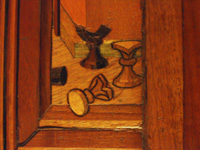 Fig. 4.30. The reticulated grid became a "dominant" feature of medieval mnemonics.As a student became adept at these memory exercises, the built environment offered a quarry for mnemonic material. One would extract fragments from the buildings encountered in daily life and recompose them in the mind as personalized palaces copiously outfitted with storage locations for choice morsels of wisdom. Consequently, amid rhetorical debate or presentation, one could summon passages at will and re-present them sequentially by the mental navigation of a given palace/treatise.
Fig. 4.30. The reticulated grid became a "dominant" feature of medieval mnemonics.As a student became adept at these memory exercises, the built environment offered a quarry for mnemonic material. One would extract fragments from the buildings encountered in daily life and recompose them in the mind as personalized palaces copiously outfitted with storage locations for choice morsels of wisdom. Consequently, amid rhetorical debate or presentation, one could summon passages at will and re-present them sequentially by the mental navigation of a given palace/treatise.
42Striking (or monstrous)107 construction details were considered choice materials for mnemonic construction since they provided the mind with secure memory fixtures. If the locations for memory placement were too ordinary, or even too poorly "illuminated," errors would occur. Publicius bluntly states, "Resemblance among places should be avoided more than death," a comment that reveals a fundamental difference between contemporary and quattrocento perceptions of memory.108 Whereas we now perceive errors of memory (including inaccuracy and "forgetting") to occur in the process of recollection, memory errors were traditionally considered to occur during the process of storage, owing to a failure to transform sense impressions into secure mental images.
43It is reasonable to speculate, then, that architectural ornament not only influenced architectural mnemonics but was in turn influenced by its procedures. This would have been especially true where sponsors of construction were steeped in rhetoric, as in classical Rome. For a culture defined by political oration and legal debate, the architecture of palaces and the city provided a ubiquitous map and legend (as well as a mental stage-setting) for composing one's thoughts and oneself for the theater of civic participation.
44Vitruvius attests to the significance of rhetoric: "Advocates [lawyers] and professors of rhetoric should be housed with distinction, and in sufficient space to accommodate their audiences."109 In addition to underscoring the theatrical nature of rhetoric, with its performers earning fees "on the scale of those given to a prima donna in our time,"110 Vitruvius's comment suggests that rooms were invented within the private residence to house these rhetorical performances.111
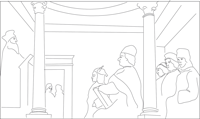 Fig. 4.31. Federico and Guidobaldo listening attentively to an oration. Fig. 4.31. Federico and Guidobaldo listening attentively to an oration. |
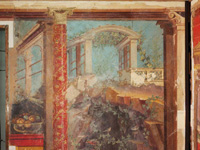 Fig. 4.32. Ornament in the cubiculum from the villa of P. Fannius Synistor, ca. 50-40 BCE. Fig. 4.32. Ornament in the cubiculum from the villa of P. Fannius Synistor, ca. 50-40 BCE. |
45A smaller, more private chamber in the Roman home, the cubiculum, transparently embodies the historical chiasmus between architecture and memory. Replete with frescoes of illusionistically rendered civic and garden architecture, the cubiculum offered a theater of locations for contemplation. The mingling of flora and fauna with architectonic elements (pergolas, fountains, and structural ornament) is telling.112 In the fourth Georgic, Virgil speaks of the cells in a beehive as cubilia.113 By ancient tradition bees were associated with knowledge and learning and were called the "birds of the muses." Consequently, scholars were likened to bees, whose diligent investigations afield gather nectar to produce honey.114 During the Middle Ages pedagogical tropes of bees, beehives, wax, and honey became somewhat less metaphoric, when monasteries literally buzzed with the sounds of cogitation, as brethren "ate the book" and ruminated.115 In Federico's day, Publicius encouraged his reader: "With moderate sound and in a voice just above a whisper, we will commit the text easily to memory and to places."116
46Although the steady hum of rumination was gradually hushed by the printing press, Francis Bacon incorporated the trope as a fundamental image of the scientific method when he likened the scholar-scientist to a bee in the first chapter of the Novum organum (1626).117 It is not far-fetched, then, to draw a comparison among the mnemonic imagery of classical forulae, the florilegium (literally the "reading of flowers"), and the floral ornament found in the margins of illuminated manuscripts and architectural settings of study. Nor is it stretching the point too far to envision the Roman cubiculum and the Montefeltro studioli entwined within the genealogy of these pedagogical metaphors, as cells in which the scholar-bee would distill and preserve the sweet nectar of experience. Castiglione advises:
He who wishes to be a good pupil, besides performing his tasks well, must put forth every effort to resemble his master, and, if it were possible, to transform himself into his master. And when he feels that he has made some progress, it will be very profitable to observe different men of the same calling, and governing himself with that good judgment which must ever be his guide, to go about selecting now this thing from one and that thing from another. And as the bee in the green meadows is ever wont to rob the flowers among the grass, so our Courtier must steal this grace from all who seem to possess it, taking from each that part which shall most be worthy praise.118
47 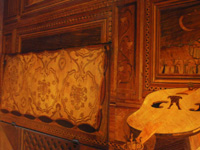 Fig. 4.33. Sevenfold flowers, thistle-like artichokes and pomegranates in an intarsiated cushion at Urbino.In a related matter, one might wonder at the ornamental abundance of pearls in the studioli. Iconographically, the pearl has been interpreted as "the result of lightning penetrating the oyster, hence it was regarded as the union of fire and water, both fecundating forces, and so denotes birth and rebirth; fertility. It also symbolizes innocence, purity, virginity, perfection, humility and a retiring nature."119 In Greco-Roman traditions, the pearl represented "love and marriage, [as an] emblem of Aphrodite/Venus, the 'Lady of the Pearls,' who rose from the waters."120 Furthermore, in Christian traditions, the pearl denotes the Immaculate Conception, as well as "the hidden gnosis necessary for salvation, the 'pearl of great price,' for which man must dive into the waters of baptism and encounter dangers."121 It is also worth noting that the 12 gates of the New Jerusalem, described in the book of Revelation, were made of pearls.
Fig. 4.33. Sevenfold flowers, thistle-like artichokes and pomegranates in an intarsiated cushion at Urbino.In a related matter, one might wonder at the ornamental abundance of pearls in the studioli. Iconographically, the pearl has been interpreted as "the result of lightning penetrating the oyster, hence it was regarded as the union of fire and water, both fecundating forces, and so denotes birth and rebirth; fertility. It also symbolizes innocence, purity, virginity, perfection, humility and a retiring nature."119 In Greco-Roman traditions, the pearl represented "love and marriage, [as an] emblem of Aphrodite/Venus, the 'Lady of the Pearls,' who rose from the waters."120 Furthermore, in Christian traditions, the pearl denotes the Immaculate Conception, as well as "the hidden gnosis necessary for salvation, the 'pearl of great price,' for which man must dive into the waters of baptism and encounter dangers."121 It is also worth noting that the 12 gates of the New Jerusalem, described in the book of Revelation, were made of pearls.
48In ancient Rome, pearls were highly valued for their commercial exoticism: on the Italic peninsula, only irregularly formed, reddish pearls were available. The pearls of the highest value were white and spherical, and they arrived from Persia and the Orient. During the Renaissance, the primary eastern point of entry to Italy was Venice. By the end of the 15th century, sumptuary laws were created to temper the extravagant purchase and public display of pearls, which had created a phenomenon akin to the tulipomania experienced by the Netherlands in the 17th century.122 In a chapter dedicated to mollusks in his guide to right pleasure and good health, Bartolomeo Platina alludes to this decadent aspect of pearls through an infamous episode from the life of Cleopatra: "When she was enticing Antony to wantonness, she said that she could spend 10,000,000 sesterces on one meal. When she saw Antony was surprised at that, she laughed, and the crazy woman called for a vial into which she poured some sharp vinegar and, plucking a pearl from her ear [worth ten million sesterces] with her other swift hand, dropped it in, and when it was soon dissolved, as is the nature of this stone, she served it to Marc Antony to drink."123
49In ancient Rome, a white spherical pearl was called an unio,124 a Latin term for the number one that serves also as the root of union-em, expressing unity and union.125 "Imperfect" pearls were called margarites by Theophrastus.126 The pearls traditionally depicted in Renaissance paintings, as in the studioli, are spherical and white. Recalling that from early recorded history the sphere has represented an idealized form of the universe, it is understandable, particularly in light of the late quattrocento "rediscovery" of Plato and Plotinus, that the pearl embodied notions of perfection, unity, and purity in miniature. Unlike most precious stones and gems, which require faceting to reveal their splendor, the pearl is perfect in its natural state and may be seen to manifest the universal monad, a notion familiar to the court of Urbino through the De nuptiis Philologiae et Mercurii of Martianus Capella and the interests of Nicholas of Cusa.127
50There is another, more sinuous path that links pearls to the Montefeltro studioli. Because pearls were cultivated by other cultures at quite a distance, information about the practice of pearl harvesting in classical Rome and Renaissance Italy was sparse. From secondhand sources, historians report that pearl oysters lived in communities "like swarms of bees," being governed by one "remarkable for its size and great age, which was wonderfully expert in keeping its subjects out of danger."128 Similarly, Platina writes that bees "have law in the likeness of a very good chief to whom everything is referred. With him going ahead, they set out from place to place, or he is carried out if he cannot fly."129 This sentiment is shared by Castiglione, who refers to the habits of the bee as characteristic of the appropriate behavior of a prince, seeing that the prince is the source of law for his subjects.130 With these comparisons, it is not a fantastic leap to attribute other associations of bees to oysters—that, for example, pearls would be the monadic offspring of the "sea-birds" of the muses. Platina notes: "They say the oyster is impregnated by conception from the dew when the appointed hour of its fruitful year sends it out opened up as though with gaping mouth, and better pearls are born from the quality of the dew, pure or worse."131
51As odd as all of this might seem from our vantage, historic narratives enlace this notion more securely to the studioli. With the victories of Pompey (88–63 bce), pearls were brought back from the Orient in plenitude. "Pliny records that in great Pompey's triumphal procession in 61 B.C. were borne 33 crowns of pearls and numerous pearl ornaments, including a portrait of the victor, and a shrine dedicated to the muses."132 Moreover, Philo, as the Jewish envoy to Rome, noted that the beds used by Romans for meditative repair in their cubiculae were adorned with multitudes of pearls.133 As the latticework and forulae of studious environments provided ideal mnemonic perches for bees and doves, it is also logical that the furniture in a setting dedicated to the muses would be adorned with their precious monadic excretions, cultivated from the protean ocean.
52In the 1476 portrait of Duke Federico with Prince Guidobaldo, Federico is shown as the virtuous soldier-scholar, armed and reading, seated on a thronelike chair encrusted with pearls. At the end of the Order of the Garter below his knee is a single pearl. Guidobaldo is bedecked with pearls, as is the Persian-styled miter that Federico had received from the ambassador of the Ottoman sultan Muhammad II in 1471. The duke's 1480 manuscript of Virgil's Aeneid includes an image of the Montefeltro eagle surrounded by the Order of the Garter, bordered with pearls. In the Gubbio studiolo, the scopetta in the central-most cabinet (directly above the Order of the Garter) is encircled with pearls in remembrance of Duchess Battista.134 Directly above, in the portrait of Guidobaldo with Rhetoric, the goddess is draped with pearl necklaces, and pearls are set into the arch above her throne.135
53 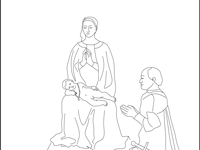 Fig. 4.34. Detail from Piero della Francesca's Brera Altarpiece.For a work commissioned by Federico in 1472, now known as the Brera Altarpiece, Piero della Francesca adorned the angels and Virgin Mary with pearls, while flowers appoint the surrounding architecture. Suspended in a seashell at the back of the altar, an ostrich egg evokes a complex metaphor: the scale of the egg (with regard to the shell) is pearlescent, embedding the pantheistic iconography of a fecundating force in the historia of the Immaculate Conception. In the scene, Federico kneels before the Christ child, a thinly veiled reference to Prince Guidobaldo, whose recent birth provided a long-awaited heir to the dukedom. As a transparent allusion to the impresa of the Montefeltro ostrich, the egg emphasizes this conflation.
Fig. 4.34. Detail from Piero della Francesca's Brera Altarpiece.For a work commissioned by Federico in 1472, now known as the Brera Altarpiece, Piero della Francesca adorned the angels and Virgin Mary with pearls, while flowers appoint the surrounding architecture. Suspended in a seashell at the back of the altar, an ostrich egg evokes a complex metaphor: the scale of the egg (with regard to the shell) is pearlescent, embedding the pantheistic iconography of a fecundating force in the historia of the Immaculate Conception. In the scene, Federico kneels before the Christ child, a thinly veiled reference to Prince Guidobaldo, whose recent birth provided a long-awaited heir to the dukedom. As a transparent allusion to the impresa of the Montefeltro ostrich, the egg emphasizes this conflation.
4.4 Aedificatio: Architecture as a Metaphor for Meditation
Whisper words of truth in my heart . . . while I withdraw to my secret cell [cubiculo] and sing you hymns of love, groaning with grief that I cannot express as I journey on my pilgrimage. Yet I shall remember the heavenly Jerusalem and my heart shall be lifted up towards that holy place.—Augustine, Confessions, 12.16
54 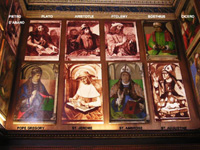 Fig. 4.35. St. Augustine among the illustrious men in the Urbino studiolo.Even before the fall of the Roman Empire, the pedagogical objectives and procedures of memory training had begun to change markedly. The early fathers of the Christian Church—Augustine, Jerome, Ambrose, and Gregory the Great—transformed classical architectural mnemonics into sancta memoria (holy recollection), a monastic practice of meditation that cultivated the memory through aedificatio, a process in which the craft of edifying thoughts mirrored the edifying craft of architecture. As Augustine's withdrawal to his "cubiculo" implies, memory architecture offered a "secret" place within to dwell upon God as well as a vehicle to draw nearer to him, in contemplation. In the words of Gregory the Great, memory became a machina mentis—a machine of the mind—capable of "lifting" the soul to God.136
Fig. 4.35. St. Augustine among the illustrious men in the Urbino studiolo.Even before the fall of the Roman Empire, the pedagogical objectives and procedures of memory training had begun to change markedly. The early fathers of the Christian Church—Augustine, Jerome, Ambrose, and Gregory the Great—transformed classical architectural mnemonics into sancta memoria (holy recollection), a monastic practice of meditation that cultivated the memory through aedificatio, a process in which the craft of edifying thoughts mirrored the edifying craft of architecture. As Augustine's withdrawal to his "cubiculo" implies, memory architecture offered a "secret" place within to dwell upon God as well as a vehicle to draw nearer to him, in contemplation. In the words of Gregory the Great, memory became a machina mentis—a machine of the mind—capable of "lifting" the soul to God.136
55Through the meditational exercises of sancta memoria, adepts assimilated and elaborated on the foundation of Christian doctrine—a historia of etymologies, narrative imagery, and authoritative commentaries on biblical scripture. Memorization of historia exercised one's heuristic capacities, insinuating an array of associative paths for thought.137 With architecture as an operative metaphor, holy recollection secured historia as a commonplace foundation for personal experience. Gregory the Great describes this process in Moralia in Job: "First we put in place the foundations of literal meaning [historia]; then through typological interpretation we build up the fabric of our mind in the walled city of faith; and at the end, through the grace of our moral understanding, as though with added color, we clothe the building."138
56Before proceeding with the notion of aedificatio, however, we should first consider its foundations. Basic memory models (birdcages and beehives) were adopted from classical rhetoric, imbued with Christian doctrine, and applied according to increasingly complex stratagems. In the Didascalicon (1128), a treatise on education notable for its treatment of both the liberal and mechanical arts,139 Hugh of St. Victor divided the stages of learning into the lectio divina and meditatio. Translated as "divine reading" or "study," the lectio trained one's natural aptitude for thought by "the order and method of exposition and analysis, including the disciplines of grammar and dialectic."140 Meditatio drew on skills honed by lectio but was not bound by its rules or precepts: "[Meditatio] delights to range along open ground, where it fixes its free gaze upon the contemplation of truth, drawing together now these, now those ideas, or now penetrating into profundities, leaving nothing doubtful, nothing obscure. The start of learning, thus, lies in lectio, but its consummation lies in meditation."141
57Among the mnemotechniques exercised in lectio divina, concatenation linked biblical passages with commentaries of subsequent authors, forming chains of related topics to which one would en-link one's own interpretations. Used as a metaphor for mnemonic training, the chain by its interlocking nature recalled to one's mind an accumulation of associations, in the order of attachment. With discipline and experience, these chains would lengthen and expand, since they were not only topical but also temporal, forming a lineage of authoritative commentaries. As a result, one could retrace the genealogy of an idea, image, or phrase from a recent author, such as Aquinas, through the interpretive tropes of his Latin and Greek predecessors to its origins in the Old Testament.
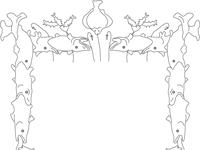 Fig. 4.36. Image of hooked fish, after marginalia in The Hours of Catherine of Cleves. Fig. 4.36. Image of hooked fish, after marginalia in The Hours of Catherine of Cleves. |
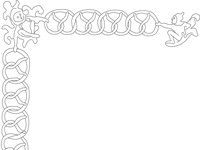 Fig. 4.37. Enlinked pretzels, after marginalia in The Hours of Catherine of Cleves. Fig. 4.37. Enlinked pretzels, after marginalia in The Hours of Catherine of Cleves. |
58 The ancient pedagogical trope of "eating the book," for instance, offers a prime example of the catena. In Ezekiel 3:1 we find: "'Son of man, eat what is given to you; eat this scroll, then go and speak to the House of Israel.' I opened my mouth; he gave me the scroll to eat and said, 'Son of man, feed and be satisfied by the scroll I am giving you.' I ate it, and it tasted sweet as honey." Jerome, in his commentary on Ezekiel, notes that "eating the book is the starting-point of reading and of basic history. When, by diligent meditation, we store away the book of the Lord in our memorial treasury, our belly is filled spiritually and our guts are satisfied."142 Jerome's contemporary Augustine also describes the ruminative character of the memory: "No one can pretend that the memory does not belong to the mind. We might say that the memory is a sort of stomach for the mind, and that joy or sadness are like sweet or bitter food."143 Today when we speak, we continue to use, even if unwittingly, such gustatory terms as digest and ruminate to describe the thought process.
59 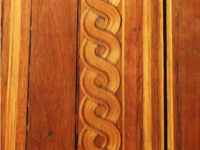 Fig. 4.38. "Chain" border detail from cabinets at Gubbio.An even more fitting example of the catena is offered by the catena aurea, or Golden Chain. This image signified for Homer the rays of the sun and the interlocking movements of the celestial bodies and is also found in the works of Plato, Plotinus, Macrobius, Ficino, and the court astrologer of Urbino, Paul of Middleburg.144 Among the tropes attached to this image, the catena aurea represented a link between heaven and earth, micro- and macrocosmos, and ancient scholars and Renaissance humanists.145 As a vital link in this tradition, Aquinas composed the Catena aurea, a work compiled in 1263 from patristic texts on the Gospels he had committed to memory during visits to various religious houses.146
Fig. 4.38. "Chain" border detail from cabinets at Gubbio.An even more fitting example of the catena is offered by the catena aurea, or Golden Chain. This image signified for Homer the rays of the sun and the interlocking movements of the celestial bodies and is also found in the works of Plato, Plotinus, Macrobius, Ficino, and the court astrologer of Urbino, Paul of Middleburg.144 Among the tropes attached to this image, the catena aurea represented a link between heaven and earth, micro- and macrocosmos, and ancient scholars and Renaissance humanists.145 As a vital link in this tradition, Aquinas composed the Catena aurea, a work compiled in 1263 from patristic texts on the Gospels he had committed to memory during visits to various religious houses.146
60Language provided ideal materials for concatenation. Through the educational practice of etymological foraging, various significances of a word could be gathered and unleashed in the mind as an imaginative force of interpretation. Exemplary treatises such as Isidore of Seville's Etymologiae explored the visual and aural subtleties of language as inventive byways for thought.147 Whether visualized as letters and words orthographically transposed to the page of the mind148 or humorously sounded out as puns and onomatopoeia, language was phenomenologically conducive to memorization. For Isidore, Hugh, and Aquinas, whose texts were dictated, digested, and transcribed aloud, kinship between such terms as Babel (the tower) and babble (the confused language that precipitated the fall of the Tower of Babel) was not only self-evident, it was tantamount to historical truth.149
61By such etymological conflation, Hugh transformed the ancient image of the arca, a chest containing books and personal belongings, into an arca sapientia, a container of wisdom built into the memory. Within the mental image of an arca Hugh nested properties of a storage chest, an apothecary's shop, the Ark of the Covenant, the Ark of Noah, and a walled city, equipping a student with a model of extended techniques for mnemonic meditation. First, Hugh introduces the arca as being contained within oneself: "Children, knowledge [sapientia] is a treasury [thesaurus] and your heart is its strongbox [archa]."150 Elsewhere, he directly compares the arca with the self: "I give you the Ark of Noah as a model of spiritual building, which your eye may see outwardly so that your soul may be built inwardly in its likeness."151 Hugh then describes in great detail how this ark is to be constructed, through a theological rendering of the traditional architectural mnemonics of images and places.152
62 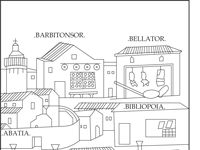 Fig. 4.39. Drawing of a fortified city on a hill.A more complex group of pedagogical devices, the machinae universitatis, was designed "to organize a large amount of disparate information in a readily available, mnemonically effective, way."153 Often these two-dimensional diagrams were fitted with moving parts to facilitate the recombination and permutation of vast arrays of visual bits of information. Concentric wheels with moveable rings, like those devised by Raymond Lull in the late 13th century, were commonly employed in medieval instruction;154 for memory craft, they were often rendered in the guise of compatible mechanisms, such as astrolabes.155 In addition to a series of alphamnemonic wheels, Publicius's treatise offers several examples of these recombinatorial diagrams, including a Porphyrian tree and a chessboard with its pieces.156
Fig. 4.39. Drawing of a fortified city on a hill.A more complex group of pedagogical devices, the machinae universitatis, was designed "to organize a large amount of disparate information in a readily available, mnemonically effective, way."153 Often these two-dimensional diagrams were fitted with moving parts to facilitate the recombination and permutation of vast arrays of visual bits of information. Concentric wheels with moveable rings, like those devised by Raymond Lull in the late 13th century, were commonly employed in medieval instruction;154 for memory craft, they were often rendered in the guise of compatible mechanisms, such as astrolabes.155 In addition to a series of alphamnemonic wheels, Publicius's treatise offers several examples of these recombinatorial diagrams, including a Porphyrian tree and a chessboard with its pieces.156
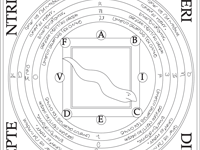 Fig. 4.40. A concentric combinatorial memory wheel. Fig. 4.40. A concentric combinatorial memory wheel.Extended Caption 17 |
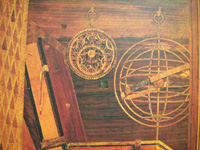 Fig. 4.41. Astrolabe and armillary sphere, Urbino studiolo. Fig. 4.41. Astrolabe and armillary sphere, Urbino studiolo.Extended Caption 17 |
63As a palpable metaphor for thought and the workings of the memory, building became valued as an active state of knowing as well as an enclosure for knowledge. By entering into (a) memory building, one ascended from the world in a state of contemplative love. The architect's machina, used to hoist blocks of masonry into place, symbolically facilitated this ascent due both to its pivotal role in the construction of divine structures, such as cathedrals and monasteries, and, even more important, to the overarching notion that God the Architect would have used such a mechanism while fabricating the universe.157 In Etymologiae, Isidore of Seville extracts the word maciones (mason) from the Latin machina, citing the tradition of the architect-inventor who, like Daedalus, designs the walls of buildings and the machines that facilitate their fabrication.158 For Gregory the Great the machina symbolized the act of contemplation, energized by love,159 which builds the fabric of the mind. As the mechanism of aedificatio, contemplation facilitated the discovery or fabrication of a universe within the memory, empowering one to emulate in small compass the labors of God the Architect.
64 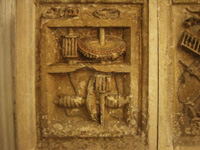 Fig. 4.42. Triple hoist mechanism carved by Ambrogio Barrocci after drawing by Francesco di Giorgio.
Fig. 4.42. Triple hoist mechanism carved by Ambrogio Barrocci after drawing by Francesco di Giorgio.
Extended Caption 18Somewhat less metaphorically, Vitruvius had defined a machine as "a continuous material system having special fitness for the moving of weights."160 He distinguished between machines (machinae), which are "driven by several workmen," and instruments (organae), which "carry out their purpose by the careful handling of a single workman," a pragmatic observation that foreshadowed a central motif of sancta memoria.161 The operation of machines required collaborative effort to transport materials too cumbersome for one person alone, a simple fact that supplied the practitioners of aedificatio with a wellspring for allegory. As the lesson of the Tower of Babel illustrates, without appropriate planning and prudent guidance, collaborative projects —even those with a clear and common purpose—are easily sabotaged by miscommunication. There are numerous opportunities for chance and human discord to disrupt the flow of construction. From the intricate choreography of various trades and materials to adroit solutions for the dilemmas that inevitably arise, the complexity of construction calls for prudent leadership.
65 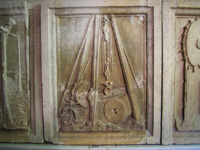 Fig. 4.43. Column hoist carved by Ambrogio Barrocci after drawing by Francesco di Giorgio.A wise and well-tempered architect, incorporating experience and foresight, is essential to conduct the volatile dynamics of collaboration toward the goal of raising an edifice. As caretaker of the process of construction, who translates the intangible ideals of a community into its places of gathering, an architect is invested with profound ethical responsibility. For the meditative practice of aedificatio, the architect's machina was topologically conveyed to the site of memory-building as an ethical device central to self-edification.
Fig. 4.43. Column hoist carved by Ambrogio Barrocci after drawing by Francesco di Giorgio.A wise and well-tempered architect, incorporating experience and foresight, is essential to conduct the volatile dynamics of collaboration toward the goal of raising an edifice. As caretaker of the process of construction, who translates the intangible ideals of a community into its places of gathering, an architect is invested with profound ethical responsibility. For the meditative practice of aedificatio, the architect's machina was topologically conveyed to the site of memory-building as an ethical device central to self-edification.
66The collaborative nature of construction fueled other allegorical interpretations. Unlike contemporary construction, where buildings are shaped by a legally binding "critical path" of budgeted schedules, cathedrals and monasteries were continuously "under construction," their final form manifesting centuries of communal effort and an aggregate of ornamental character bestowed by legacies of architects and master masons. The indefinite duration, or non finito, of this mode of construction should not be oversimplified as a matter of technological capacity; rather, it reflects ontological aspirations quite removed from our own. As Federico and his architects incorporated existing structures into their architectural projects, so they left certain areas "unfinished," to be elaborated on by others. The entry facade of the Urbino palace offers a prominent example of non finito.
67 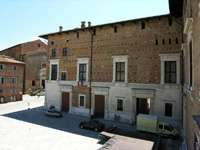 Fig. 4.44. "Unfinished" façade of Urbino's ducal palace.From the peripatetic apostle Paul to his monastic descendants, educators of sancta memoria played on the image of architecture as an exercise for building personal character and communal identity. In 1 Corinthians 3:10–17, Paul refers to himself as a wise master builder, claiming to have laid the foundations of a doctrine whereupon others would continue to build within themselves—each as a temple wherein, it was said, God dwells. Subsequent authors, such as Gregory and Hugh, attended to the methods of interpretation by which each student would raise, internally and uniquely, an allegorical superstructure on the foundations of historia.162 Although constructed from commonplace materials (fables and buildings), memory architecture was a personal creation, reflecting the unique character of each pupil. Although this mnemonic architecture was invisible to others, one's character was not, expressing itself in one's worldly interactions. Like the florilegium, the practice of aedificatio built personal character and established guiding principles for everyday life.
Fig. 4.44. "Unfinished" façade of Urbino's ducal palace.From the peripatetic apostle Paul to his monastic descendants, educators of sancta memoria played on the image of architecture as an exercise for building personal character and communal identity. In 1 Corinthians 3:10–17, Paul refers to himself as a wise master builder, claiming to have laid the foundations of a doctrine whereupon others would continue to build within themselves—each as a temple wherein, it was said, God dwells. Subsequent authors, such as Gregory and Hugh, attended to the methods of interpretation by which each student would raise, internally and uniquely, an allegorical superstructure on the foundations of historia.162 Although constructed from commonplace materials (fables and buildings), memory architecture was a personal creation, reflecting the unique character of each pupil. Although this mnemonic architecture was invisible to others, one's character was not, expressing itself in one's worldly interactions. Like the florilegium, the practice of aedificatio built personal character and established guiding principles for everyday life.
68  Fig. 4.45. Superimposition of human and building profiles.
Fig. 4.45. Superimposition of human and building profiles.
Extended Caption 19The practice of aedificatio was thus simultaneously personal and communal. Within the most secret cell of your memory, the arca or cubiculum of your heart, your private meditations were trained toward the ethical objective of sancta memoria—to envision an ideal condition for living among others, and to translate from this ideal a practice of everyday life. Although one's memory structures were visible only to oneself, all who practiced aedificatio were united by the notion that they continued the work of God as architects of their own lives. Paul exhorts: "We are fellow workers with God, you are God's building."163
69 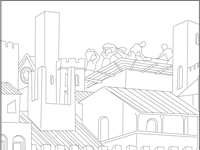 Fig. 4.46. Detail of The Effects of Good Government.The convivial aspirations of sancta memoria fortified personal expression. Compared with the habitual training of the lectio, meditatio was characterized by a free play of association and not obliged to follow a prescribed path.164 And yet, in spite of its "delight to range along open ground . . . drawing together now these, now those ideas," it was essential for meditation to have a target destination to orient one's inner pilgrimage. In monastic meditation, all roads led to the New Jerusalem, Augustine's City of God.165
Fig. 4.46. Detail of The Effects of Good Government.The convivial aspirations of sancta memoria fortified personal expression. Compared with the habitual training of the lectio, meditatio was characterized by a free play of association and not obliged to follow a prescribed path.164 And yet, in spite of its "delight to range along open ground . . . drawing together now these, now those ideas," it was essential for meditation to have a target destination to orient one's inner pilgrimage. In monastic meditation, all roads led to the New Jerusalem, Augustine's City of God.165
70Apart from the evocative account of its foundations and general character in Revelation 21, the New Jerusalem was as open to imaginative interpretation as the mnemonic models and mechanisms conceived to assist in contemplation. The fruit of study, then, was to envision the ideal city within oneself as a communal building site for memory, energized and supplied with the materials gathered from one's diligent investigations afield. While providing an inner source of hope and fortitude by the promise of an ideal state unassailed by fortuna and the fragility of human affairs, the City of God was also a constant reminder that citizenship in the hereafter was determined by the character of one's actions in the present.166
71The intangible objective of the New Jerusalem did not diminish but rather elevated the value of material works, particularly those assisting in mnemonic composition. Since knowledge of a material art was thought to provide a "sort" of wisdom, products of artisanship were considered to demonstrate virtù by their capacity to assist the mind to rise above the realm of the senses to divine contemplation. Examples of such virtù are offered by medieval picturae—paintings, tapestries, or mental images painted with words (including poems).167 Picturae were composed of imagines agentes, activating images that stimulated cogitation and facilitated mnemonic navigation. As in classical architectural mnemonics, the images in picturae assisted memorization by supplying cues for the twists of a given storyline: likewise, these visual prompts also furnished one's own compositional inventions.
72In addition to a destination (skopos), picturae provided meditation with a starting point (status) and visual channels (ductus) to convey the mind's eye among the episodes of a depicted narrative.168 Less significant than where meditation began was how it began: the status could be any image or phrase that adequately stimulated the emotions and triggered the recollective process. As such, the pictura offered apertures for entry into thought. One might, for example, follow Aristotle's suggestion to begin from a central location and proceed to consider the images on either side, precisely the condition we find in the east wall of the Urbino studiolo.169
73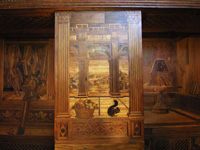 Fig. 4.47. East wall of Urbino studiolo.Pictural compositions offered spaces for thought; their dense visual settings invited mental perambulation. During contemplation of a fresco or tapestry, in its presence or in recollection, the mind's eye entered the picture plane and navigated among the images, generating new associations and courses for thought.170 Ductus offered tracks for the pilgrim's progress. Vegetation, animals, and architectural ornament were conduits for the flow of one's thought: redirecting it, altering its pace, and drawing the mind's eye along a narrative path while providing ample opportunity for digression and invention. Images provided memory markers for this flow, turning points that stimulated and sustained an observer's interest and empathy.
Fig. 4.47. East wall of Urbino studiolo.Pictural compositions offered spaces for thought; their dense visual settings invited mental perambulation. During contemplation of a fresco or tapestry, in its presence or in recollection, the mind's eye entered the picture plane and navigated among the images, generating new associations and courses for thought.170 Ductus offered tracks for the pilgrim's progress. Vegetation, animals, and architectural ornament were conduits for the flow of one's thought: redirecting it, altering its pace, and drawing the mind's eye along a narrative path while providing ample opportunity for digression and invention. Images provided memory markers for this flow, turning points that stimulated and sustained an observer's interest and empathy.
74The narrative space of a pictura could be rendered as a thematic cycle, with ornamental ductus leading observers across the fabric of a cathedral or monastic compound. Picturae could be mounted onto wooden panels and assembled contiguously to create intimate, contemplative settings, as at St. Peter's and Sta. Maria Maggiore in Rome.171 They could also be strategically placed throughout a larger construct as markers for ritual processions: the Stations of the Cross, for example, integrates the architectural ornament of a church and the ritual choreography of its congregation. In addition to its metaphoric dimensions, then, architecture provided a prosthetic for the mind, a physical matrix that set thought in motion by engaging the body's entire sensory apparatus. The cathedral provided the medieval mind with an "engine for prayer," facilitating private meditation and communal ritual proceedings, as well as the perambulatory flow of pilgrims across Europe towards the earthly Jerusalem.172
75 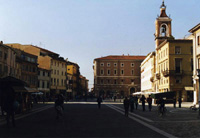 Fig. 4.48. Piazza del Foro, Rimini.
Fig. 4.48. Piazza del Foro, Rimini.
Extended Caption 20The architectural ornament of actual and imagined buildings conveyed the mind's eye between the exterior world and the interior seat of judgment.173 With the theological and moral underpinnings of church doctrine, the ornamental language of architecture was conceived and refined as a topological guide to visualizing social conduct. Through sancta memoria, mnemonic architecture offered a medium for invention as well as a container for inventory. Study was considered a lifelong endeavor rather than a liminal phase—a lifetime of finding and keeping to the Way, as a pilgrim en route between the lost Zion and the dream of the New Jerusalem. History offered foundations on which the edifice of one's life would be constructed. Lectio prepared the adept with the tools and procedures for crafting thought and thereby edifying oneself. The practice of meditatio cultivated one's habits in emulation of God the Architect. Through the metaphor of aedificatio one negotiated everyday life while contributing to the unceasing fabrication of Augustine's heavenly Jerusalem, a destination that, for Federico, Guidobaldo, and their colleagues, bore striking resemblance to Plato's Republic.
Notes
Note 1: A member of one of Venice's Longhi (long-established families), Giustiniani (1388–1446) held several positions of considerable political influence: among them, he led the powerful and secretive Council of Ten and was procurator at San Marco. In his leisure time, Leonardo wrote letters in Latin and translations from Greek, but he was most widely celebrated for his love songs, particularly his canzonette and strombotti. The originality of these compositions, whose style became known as Giustinian, derived from the fusion of popular song with an elegant and recondite interweaving of lyrics in Greek, Latin, and Venetian dialect. Several works to his credit were present in Urbino's ducal library (I.V. #31, 405, 406, and 408). Giustiniani's lyrics to the love song "O Bella Rosa" were originally burnished into an intarsiated manuscript in the Gubbio studiolo. back
Note 2: Labalme, Bernardino Giustiniani, 23. back
Note 3: Castiglione's Book of the Courtier features a lengthy debate among members of the Urbino court (including the Venetian Pietro Bembo) concerning the inherent differences between republics and principalities. back
Note 4: Vespasiano da Bisticci, Vespasian Memoirs, 110–11. back
Note 5: Vespasiano da Bisticci, Vespasian Memoirs, 99. back
Note 6: "It is hard to talk to yourself for hours on end. Sustained thought in an oral culture is tied to communication." Ong, Orality and Literacy, 34. back
Note 7: Vespasiano da Bisticci, Vespasian Memoirs, 105, mentions that Lazzaro read daily from Holy Writ. Is this perhaps the same Maestro Lazzaro who reputedly cast a horoscope for Lorenzo de' Medici in 1492, just before the death of Il Magnifico? back
Note 8: Machiavelli, The Prince, 127. back
Note 9: Vespasiano da Bisticci, Vespasian Memoirs, 87–89. back
Note 10: If by chance they had not already met in Venice, Federico and Bernardo would cross paths in Rome early in the 1460s, during Sigismondo Malatesta's excommunication trial. Representing the Serenissima, Giustiniani (unsuccessfully) petitioned Pope Pius II to pardon the condottiere, whose lands Venice considered the belly of its republic. Following the trial, Malatesta remained in Venice's employment, fighting in Greece until his death in 1468. back
Note 11: Epideictic oration, or elocution, addresses a present circumstance, treating a subject with the progymnasmata exercises of praise (encomium) or blame (invective). See Kennedy, New History of Classical Rhetoric, 205, and Kristeller, Renaissance Thought and Its Sources, 217. back
Note 12: Origo, "Education," 68. back
Note 13: Vespasiano da Bisticci, Vespasian Memoirs, 99. The character of dialectical disputation was not necessarily antagonistic. Rather it was conversational, in keeping with the humanist tenet that historical research was an ongoing dialogue with one's ancestors. back
Note 14: Labalme, Bernardo Giustiniani, 23. back
Note 15: This is not to be mistaken for plagiarism. "Medieval scholars simply did not share our distrust of memory's 'accuracy' . . . [in a 'perfect' memory] what was valued was completeness, copiousness, rather than 'objective' accuracy, as we understand and value it now." Carruthers, Book of Memory, 160. back
Note 16: Bembo refers to the bella figura that Guidobaldo cast while in Venice during his exile in 1502–3. Dennistoun, Memoirs of the Dukes of Urbino, 2:23. Bembo later joined Guidobaldo's court. back
Note 17: This skill no doubt fed Guidobaldo's intellectual curiosity. Kristeller has described a series of ongoing debates among Greek scholars in Italy—composed in Greek—that addressed such topics as the concept of substance and the doctrine of fate. Works of several of these authors, including Cardinal Bessarion, Guidobaldo's godfather (I.V. #96, 229, 630, p. CXLIX, nn. 45, 46), and Theodore Gaza (I.V. #427, graec. 163), were present in the ducal library. Kristeller, Renaissance Thought and Its Sources, 158. back
Note 18: "He [Guidobaldo] is said to have possessed that rarest gift of never forgetting anything he wished to recollect, and to have repeated with perfect accuracy successive pages which he had read only once, some ten or 15 years before." Dennistoun, Memoirs of the Dukes of Urbino, 1:296–97. back
Note 19: "He [Guidobaldo] was educated to be worthy to follow his father, and the same training is still pursued." Vespasiano da Bisticci, Vespasian Memoirs, 107. back
Note 20: Aeneas Silvius Piccolomini, De liberorum educatione, 1450. Cited by Woodward, Vittorino da Feltre, 136ff. Piccolomini, an arch-humanist named after a descendant of the Aeneas of Virgil's epic poem, was an ardent supporter of Alberti and Montefeltro. His interests in education and memory were matched by the desire to build: under his sponsorship, his (modest) hometown was transformed into Pienza. The encomium for his portrait in the Urbino studiolo reads: "Pio II Pontif[ici] Max[imo], ob imperium auctum armis, ornatumq[ue] eloquentiae signis, Fed[ericus] pos[uit], magnitudini animi laboribusq[ue] assiduis. (To Pope Pius II, because he increased his realms and adorned it with the marks of eloquence, Federico set this up to his magnanimity and unceasing labours.)" Cheles, Studiolo of Urbino, 95. Works of Piccolomini's in the ducal library include I.V. #479–84, and p. CXLIX, n. 42. back
Note 21: Aspicis Eternos Venerande Matris Alumnos / Doctrina Excelsos Ingenioq Viros / Ut Nuda Cervice Cadant Ante [Ora Parentis / Supplic]Iter Flexo Procubuere Genu / Iustitia Pietas Vincit Reverenda Nec Ullum / Poenitet Altrici Succubuisses Sue. (You see how the eternal students of the Venerable Mother / Men exalted in learning and in genius / Fall forward, suppliantly with bared head / And bended knee, before [the face of their parent]. / With the help of Justice, reverend Piety prevails / And none regrets having submitted to his foster mother.) Section 5 explores the significance(s) of "Aspicis." back
Note 22: In addition to Raggio, Gubbio Studiolo, 93, see Nachod's translation, as cited by Cheles, Studiolo of Urbino, 28n15. back
Note 23: Because Guidobaldo's mother died following his birth, foster mother might also bear literal connotations. back
Note 24: Publicius, Art of Memory, 10. back
Note 25: "The 'places and images' [loci and imagines] scheme of artificial memory—which I call the 'architectural mnemonic,' a term more accurate than Frances Yates's 'Ciceronian mnemonic' and less misleading than the Renaissance's 'the art of memory'—is described most fully in Rhetorica ad Herennium, which is dated 86–82 B.C., just after Cicero's De inventione." Carruthers, Book of Memory, 71. back
Note 26: Labalme, Bernardo Giustiniani, 57. back
Note 27: The name Ca' Zoiosa derived from the villa inhabited by the school, a former "pleasure house" used by the patron Gianfrancesco Gonzaga's predecessor (zoiosa is Venetian dialect for jocose). Ca' Zoiosa is also referred to by the Italian la Giocosala. back
Note 28: Da Feltre also accepted female students such as Cecilia Gonzaga, who was later betrothed to Federico's younger brother, Oddantonio. The wedding never occurred, however, since neither party favored the marriage: Oddantonio was assassinated soon after, and Cecilia Gonzaga later entered a convent. back
Note 29: The Ca' Zoiosa was fashioned after the academy of Gasparino Barzizza, with whom da Feltre had studied and later succeeded as professor of rhetoric at the University of Padova. Alberti also had studied with Barzizza, whose writings were bound together with those of Guarino da Verona in the Urbino library (I.V. #604). back
Note 30: Biographies on da Feltre were composed by two former students, Bartolomeo Platina and Francesco Prendilacqua. Prendilacqua's work was commissioned by Federico. Both biographies (I.V. #620 and #418, respectively) were in the ducal library. back
Note 31: Origo, "Education," 64. back
Note 32: In the Oxford English Dictionary, this is the first definition of eloquence (from eloqui, to speak out). The fourth meaning is rhetoric. Elegance, in contrast, derives from elegare, to tie, and relates to eligere, to select. The etymological sense is thus "choosing carefully or skilfully." "1. Tastefully ornate in attire 2. Characterized by refined grace of form. Of physical movements: Graceful. 3. Of modes of life, dwellings and their appointments 4. Of composition; . . . of words or phrases: Characterized by grace and refinement 5. Of scientific processes, contrivances; 'Neat,' pleasing by ingenious simplicity and effectiveness 6. Of persons: correct and delicate in taste b. Refined in manners and habits." back
Note 33: Origo, "Education," 62. "If this Courtier speaks with so much elegance and grace, I doubt if anyone will be found among us who will understand him."—"Nay, he will be understood by everyone," replied the Count, "because facility is no impediment to elegance." Castiglione, Book of the Courtier, 45. back
Note 34: This process was not rational, as Carruthers notes, "but one of desire and will guided through the process of change by remembered habit, 'firmas facilitas' or hexis." Book of Memory, 169. "Hexis," writes Barbara Duden, "is the Greek word for attitude, for the habitual state in which a person finds herself." Disembodying Women, 91. back
Note 35: Aristotle Politics 8.3, 1338b2. back
Note 36: Da Feltre would awaken his most promising students before daylight for an extra hour's worth of instruction. Origo, "Education," 61. back
Note 37: Piccolomini, De liberorum educatione, cited by Schevill, First Century of Italian Humanism, 74. Publicius includes old beef and "meat from an animal which has pulled a plough" among those foods contrary to mental activity: "You will consider it necessary to abstain from cold and moist meals and brain, marrow, ham. . . . Pungent and smoky things, such as horseradish, garlic, onion, leek, unless they are digested by fire, you will ward off as an enemy of memory." Art of Memory, 30. back
Note 38: In Timaeus, Plato writes that music aligns the orbits of the soul with the revolutions of the universe. About dancing, he adds: "Rhythm was given us from the same heavenly source to help us in the same way; for most of us lack measure and grace." Timaeus 47d. back
Note 39: Vergerius, De ingenuis moribus (I.V. #255), cited by Schevill, First Century of Italian Humanism, 67. back
Note 40: Castiglione, Book of the Courtier, 63. back
Note 41: Guglielmo Ebreo da Pesaro dedicated the second edition of his treatise on the art of dance, De pratica seu arte tripudii, to Duke Federico. See Gallo, Music in the Castle, 6, 76, 110, and Summers, Judgment of Sense, 111. back
Note 42: Guarino, De ordine docendi et studendi, cited by Schevill, First Century of Italian Humanism, 79. back
Note 43: Battista (d. 1447) was wed to Galeazzo Malatesta, lord of Pesaro. She likely played a role in the sale of Pesaro to Alessandro Sforza, as engineered by Federico in 1444. back
Note 44: Bruni, De studiis et literis, cited by Schevill, First Century of Italian Humanism, 69. back
Note 45: Piccolomini, De liberorum educatione, cited by Schevill, First Century of Italian Humanism, 74. back
Note 46: Origo, "Education," 61. back
Note 47: The product of a progymnasmata exercise, gnome, a maxim, is an adaptation (abstraction or elaboration) of a preexisting moral statement. It is akin to chreia, a morally steeped reminiscence of a person. Kennedy, New History of Classical Rhetoric, 204. Cheles has discerned the origin of this phrase in Virgil's Aeneid (156) as "macte nova virtute, puer: sic itur ad astra (A blessing, child, on thy young valour! So man scales the stars)." Studiolo of Urbino, 63. back
Note 48: Another of the progymnasmata exercises, the encomium offered "basic training" for epideictic rhetoric, although it was also useful in deliberative and forensic oratory. Kennedy, New History of Classical Rhetoric, 205. Even before Guidobaldo could read the choice morsels displayed in the studioli, he would have memorized them according to oral methods of instruction like those practiced at the Ca' Zoiosa. back
Note 49: Composed in 1480, this treatise was incorporated as the first volume of Ficino's Book of Life. back
Note 50: Thornton, Scholar in His Study, 120. During the 1480s, Poliziano corresponded with Lodovico Odasio, the tutor for Guidobaldo da Montefeltro. Pernis and Adams, Montefeltro and Malatesta, 38. back
Note 51: "The custom of all the gentlemen of the house was to betake themselves straightway after supper to my lady Duchess; where, among the other pleasant pastimes and music and dancing that continually were practised, sometimes neat questions were proposed, sometimes ingenious games were devised at the choice of one or another, in which under various disguises the company disclosed their thoughts figuratively to whom they liked best. Sometimes other discussions arose about different matters, or biting retorts passed lightly back and forth." Castiglione, Book of the Courtier, 12. back
Note 52: From the dedicatory letter to Lord Dom Miguel de Silva, bishop of Viseu. Castiglione, Book of the Courtier, 2. The tradition of ut pictura poesis, described in Horace's Art of Poetry, and Aristotle's mimesis historia, the imitation of human events discussed in Poetics, is embedded in Alberti's articulation of istoria. In the second book of De pictura, Alberti forms an analogy between painting and writing, comparing design with plot and colors with characters. For Alberti, the plot is more important than the characters and the overall composition is more important than the colors. In a historical detail that speaks eloquently of this figural interplay and its pertinence at Urbino, Raphael's father, Giovanni Santi, was simultaneously court painter and court poet. back
Note 53: Vitruvius, De architectura, 3.Preface.1. "Natural" talent remains a subject of intense speculation, precipitating such recent theories as Howard Gardner's "multiple intelligences." Gardner, Frames of Mind. back
Note 54: Ficino, Book of Life, 3.8.110. Ficino's integration of ancient and eastern wisdom with Christian doctrine required a line of argument that drew on the writings of exemplary authorities, such as Aquinas and Albertus Magnus. To validate astrology, a delicate subject, Ficino recounts the wisdom of the three Magi, who "came with a star guiding them, to Christ, the guide of life." Book of Life, 2.19.78. back
Note 55: Castiglione, Book of the Courtier, 261. Alberto Pérez-Gómez has discerned this metaphor in the writings of Fra Luca Pacioli, who "reminds us that Pythagoras's discovery of the proportions of the right-angled triangle is absolutely indispensable to build vertically and even to recognize justice, 'for without it, it is impossible to know the difference between good and evil, or to obtain any certain measure in our works.'" "Glass Architecture," 268. back
Note 56: "Passive acceptance of instruction was an infallible sign of an inattentive, dull, or lazy mind." Origo, "Education," 61. back
Note 57: Publicius distinguishes between memory (natural) and recollection (artificial) but for clarity of exposition addresses them together as "memory." Art of Memory, 12. back
Note 58: Lokhorst and Kaitaro, "Descartes' Theory," 8. Ben Luca adds that the quality of spirit in the brain also influences intelligence: "It is subtle and clear in some, and these people are rational, of a thoughtful disposition and intelligent. But in some people it has a bad quality, and these are insane, irrational, shallow and stupid." "Descartes' Theory," 9. back
Note 59: Despite confusing the pineal gland with the vermis, Ibn al-Jazzar agrees in principle with ben Luca. Lokhorst and Kaitaro, "Descartes' Theory," 10. back
Note 60: Publicius, Art of Memory, 28. back
Note 61: Schevill, First Century of Italian Humanism, 74. back
Note 62: Tomlinson, Music in Renaissance Magic, 105–15. back
Note 63: Publicius, Art of Memory, 30. back
Note 64: Ficino, Book of Life, 2.19.78. back
Note 65: Labalme, Bernardo Giustiniani, 58–59. back
Note 66: Bolzoni, Gallery of Memory, 87–109. back
Note 67: Aristotle Nichomachean Ethics 1103a 17ff. (I.V. #205–8). "Trained memory," Carruthers notes, invoking Aquinas, "is 'one of the conditions required for prudence,' an integral or enabling part of the virtue." Book of Memory, 69; Aquinas, Summa theologiae, 1–11 Q. 56, art. 5, obj. 3. Aquinas draws a ratio between prudence and the arts: "Prudence stands in the same relation to . . . human acts, which lie in the effective application of powers and habits, as art does to external productions." Summa theologiae, 1–11 Q. 57, art. 4, cited in Book of Memory, 65. See also Summers's discussion of prudence in Judgment of Sense, 266–82. back
Note 68: Illich, Vineyard of the Text, 33n17. Aquinas continues this praise: "Man has by nature his reason and his hands, which are the organs of organs, since by their means man can make for himself instruments of an infinite variety and for any number of purposes." Summa theologiae, 1. 76.5 ad 4, and 1. 91.3 ad 4. See also Summers, Judgment of Sense, 213: "Francesco di Giorgio insisted that the soul is not a power of the body but is rather incorporeal and it is from the nature of the soul that the differences arise between the artifacts of animals and man. Whereas the 'building' of swallows, bees, and spiders are always the same, the inventions of the human intellect are 'almost infinite, infinitely various.' Referring to the designs of castles . . . Francesco writes that 'tutte le fortezze che nella mente occorrano continuamente, sarebbe un processo in infinito. (All of the fortresses that continually occur to the mind would proceed into infinity.)'" Martini, Trattati, 482–83, 505–6. back
Note 69: Ornare, to fit out, equip, adorn. The mnemonic role of architectural ornament casts a different light on Alberti's seemingly contradictory discussion of concinnitas, whereby an architectural construct is conceived as an irreducible whole, yet structure is distinguished from ornament. The complications may stem from a matter of translation (and habituation). Mary Carruthers notes, "Bede uses the verbs ornare and decorare throughout his description [of meditational picturae]; they are untranslatable in modern English, since we insist on conceptually separating decoration from function. In Latin, these verbs encompassed both." Craft of Thought, 205. back
Note 70: Onians, Origins of European Thought, 343–48. back
Note 71: From De ingenuis moribus, cited by Schevill, First Century of Italian Humanism, 69. back
Note 72: Chambers, Patrons and Artists, 183. back
Note 73: Pernis and Adams, Montefeltro and Malatesta, 75. back
Note 74: Alberti, Art of Building, 1.12.29. back
Note 75: Federico's patrons included Lorenzo de' Medici and the humanist popes Nicholas V, Pius II, and Sixtus IV, for whom knowledge and history were perceived quite literally as armament. back
Note 76: "Architekton, 'chief maker,' 'master builder.'" Aristotle, Politics, I.13, 1260a14. back
Note 77: Machiavelli, The Prince, 58. back
Note 78: Augustine, Confessions, 10.8. back
Note 79: The debate over the relation of practice and theory was well worn by the time of Vitruvius, as evidenced in De architectura, 1.1.2. back
Note 80: Marco Frascari has wittily noted that theory and practice are like Siamese twins, which if permitted to coexist undivided have a better chance of survival than when they are separated. Likewise, according to Lossky, Mystical Theology of the Eastern Church, 202, praxis and theoria—regarded also as action and contemplation—are distinct yet inseparable in Christian wisdom. back
Note 81: "Thoughts cannot be made without the materials in memory." Carruthers, Book of Memory, 34. back
Note 82: Augustine, Confessions, 10.8. back
Note 83: Research has established that the fabrication of this matrix is neither purely theoretical nor merely metaphorical. As Wilder Penfield discovered in the 1950s, much of the brain is connected not to the sensors along the body's surface (skin, eyes, ears) but instead to a representation of the body (the "homunculus") that is mapped directly onto the surface of the brain. In other words, in our daily peregrinations, the mind functions by creating a small representation of "itself." Sensual stimuli are gathered from throughout the body and conveyed through neural centers to this homunculus, which then serves as a switchboard for the rest of the brain. Current research focuses on the degree to which the homunculus may be trained in a child or retrained in an adult. See Ramachandran and Blakeslee, Phantoms in the Brain. back
Note 84: Augustine, Confessions, 11.5. back
Note 85: From Cicero to Publicius, invention of the art of memory was attributed to the pre-Socratic poet Simonides of Ceos, who was called upon to "re-member" the instant before the catastrophic conclusion to his recitation for the guests of a banquet. For the full account, see Cicero De oratore 2.86: I.V. #447, and the first chapter of Yates, Art of Memory. back
Note 86: Aristotle De memoria 449b.30. back
Note 87: Aristotle De memoria 450a.10–15 (I.V. #214, 215). Luca Pacioli reiterates this notion in his Divina proportione: "Nothing can be grasped by the intellect unless it has been previously offered to perception in some way." See Pérez-Gómez, "Glass Architecture," 8. back
Note 88: Augustine, Confessions, 10.8. back
Note 89: Alberti, Art of Building, 2.1.33. back
Note 90: Pacioli, Divina proportione, ed. C. Winterburg, 35. back
Note 91: Cicero's description of wisdom as sapientia (from sapere, to taste) represents a deep association between taste and judgment. back
Note 92: In 1490. Pernis, "Ficino's Platonism and the Court of Urbino," 166. back
Note 93: Leonardo, Treatise on Painting, 1.34. back
Note 94: Oxford English Dictionary. back
Note 95: Carruthers, Craft of Thought, 178, 331n23. Also Bolzoni, Gallery of Memory, 87–109. back
Note 96: Cusa, De visione Dei, 43. back
Note 97: Publicius, Art of Memory, 19. Bayerle and Carruthers note that this phrase is transcribed almost verbatim from Aquinas, Summa theologiae, 2.2.49.2. back
Note 98: The Oxford English Dictionary defines iconography as "the description or illustration of any subject by means of drawings or figures." back
Note 99: In his discussion of memory images, Publicius states simply "extreme things excite the human senses and the human mind with greater force than do average things." Art of Memory, 19. Recent brain research has identified the amygdalae—two small almond-shaped sections of the temporal lobe—as emotional processors at the heart of memory activity. V. S. Ramachandran and Sandra Blakeslee note that the amygdalae are wired directly to the senses, including the skin and viscera, and play a central role in self-perception. Phantoms in the Brain, 244–45, 247. back
Note 100: Raggio, Gubbio Studiolo, 151. back
Note 101: Plato, Theatetus, 197d. Marsilio Ficino's translation of this work was included in his Commentary on Plato's Convivium . . . de amore (I.V. #221). back
Note 102: De tribus maximis circumstantiis gestorum; Carruthers, Book of Memory, app. A, 261. Inventory and invention bear the same etymological origins. This kinship is fundamental to the tradition of memory-training; inventive thought could not occur without a careful inventory of the materials of experience within the memory. Book of Memory, 33. back
Note 103: "Nesting" entails the placement of memory images one within the next, as in a Russian matrioshka doll. "Concatenation" consists of forging links by which to construct extended chains, such as the ancient catena aurea, or Golden Chain. back
Note 104: "The word forulos is of uncertain derivation, but foros, of which it is clearly the diminutive, is used by Virgil for the cells of bees." Clark, Care of Books, 31. "Complebuntque foros et floribus horrea texent." Virgil Georgics 4.250 (I.V. #492). back
Note 105: Loculamentum is used by Columella to describe the cells for birds' nests and beehives and by Vitruvius as a small box in which is placed a mechanism for measuring distances. Columella De re rustica 8.8, 9.12.2, respectively: I.V. #438; Vitruvius, De architectura, 10.9.2. back
Note 106: Hugh of St. Victor, De tribus maximis circumstantiis gestorum, cited by Carruthers, Book of Memory, 262, 347. back
Note 107: One might safely describe these details as monstrous, since they provided the memory with visual cues by which to demonstrate (de + mostrare, to show) thoughts. For a rich discussion of this notion, see Frascari, Monsters of Architecture. back
Note 108: Publicius, Art of Memory, 17. back
Note 109: Vitruvius, De architectura, 6.5.1. back
Note 110: Granger, Introduction to Vitruvius's De architectura, 2:xxv. back
Note 111: Granger, "Vitruvius and the Craftsmen of Rome," De architectura, 2:xxv. back
Note 112: The cubiculum is discussed below in this chapter. For a wealth of information on the flora and fauna of the Roman garden, see Farrar, Ancient Roman Gardens. back
Note 113: Virgil Georgics 42.243 (I.V. #492). back
Note 114: Proverbs 6:8: "Go to the bee." back
Note 115: Illich, Vineyard of the Text, 54–58. With the advent of the computer, the buzz of bees has been transformed into a fluttering of butterflies or moths. With an undercurrent of rustling keypads, spaces such as the New York Public Research Library's cavernous reading room now resemble more closely a cave of butterflies than a hive of scholars. back
Note 116: Publicius, Art of Memory, 32. For a medieval scholar "reading is to be digested, to be ruminated, like a cow chewing her cud, or like a bee making honey from the nectar of flowers. Reading is memorized with the aid of murmur, mouthing the words subvocally as one turns the text over in one's memory; both Quintilian and Martianus Capella stress how murmur accompanies meditation. It is this movement of the mouth that established rumination as a basic metaphor for memorial activities. The process familiarizes a text to a medieval scholar, in a way like that by which human beings may be said to 'familiarize' their food. It is both physiological and psychological, and it changes both the food and its consumer." Also: "Familiar is . . . a synonym of domesticare, that is, to make something familiar by making it a part of your own experience." Carruthers, Book of Memory, 164. back
Note 117: Coincidentally, in 1625 the Academia dei Lincei, one of the early scientific academies, published the first book to include images rendered with aid of a microscope, entitled Melissografie, a tract on bees. In 1629, Joachim Frizius published Summum bonum, a defense of Rosicrucianism, which was prefaced by the motto "Dat Rosa Mel Apibus" (The rose gives the bees honey). The rose depicted beneath the motto has seven petals in each of its five concentric rings. Fifty years later, the bee was a favorite subject for the pioneering entomologist Jan Swammerdam. back
Note 118: Castiglione, Book of the Courtier, 26. back
Note 119: Cooper, Illustrated Encyclopaedia, 128. back
Note 120: Cooper, Illustrated Encyclopaedia, 128. back
Note 121: Cooper, Illustrated Encyclopaedia, 128. back
Note 122: For an account of tulipomania, see Herbert, Still Life with a Bridle, 38–61. back
Note 123: Platina, On Right Pleasure, 10.14.199. back
Note 124: Pliny, Historia naturalis, 9.59. back
Note 125: Platina states, however, that unio refers to "unique" because "nowhere are two found like." On Right Pleasure, 10.14.199. back
Note 126: The ducal library possessed several works attributed to Theophrastus (372–287 bce): I.V. #211, 231, graec. 48, 75. Kunz and Stevenson, Book of the Pearl, 8. back
Note 127: "According to Capella," Pérez-Gómez notes, "the monad is all that is good, desirable and essential—a notion that was explicitly introduced into Renaissance theology by Nicholas of Cusa in his influential work De docta ignorantia." "Glass Architecture," 248. Cusa describes the sight of God as an "eye of sphericity . . . of infinite perfection." De visione Dei, 38. back
Note 128: Pliny and Aelianus quoted Megasthenes. Kunz and Stevenson, Book of the Pearl, 11. back
Note 129: Platina, On Right Pleasure, 2.14.37. back
Note 130: Castiglione, Book of the Courtier, 263. back
Note 131: Platina, On Right Pleasure, 10.14.199. back
Note 132: Kunz and Stevenson, Book of the Pearl, 9; also Pliny, Historia naturalis, 37.2. back
Note 133: Pliny, Historia naturalis, 9.35. back
Note 134: In Piero's dyptich of the Duke and Duchess Montefeltro, Battista is shown wearing a pearl necklace. back
Note 135: Notably, the crest of this arch is immediately adjacent to the words "montis feretri" in the fictive architrave text that runs continuously through the architectural space of the seven paintings. "Montis Feretri" is a reference to the origins of the Montefeltro family, and the entire passage is a direct quotation of the text in the Urbino studiolo. back
Note 136: "A soul placed far from God creates a kind of machine, that by its means [the soul] may be lifted to God." Gregory the Great, Expositio in cantincum canticorum, 3.14–15. As cited by Carruthers, Craft of Thought, 81. back
Note 137: Heuristics (or heuretics) is both an art of finding and an art of invention. For discussion of this ambivalence, see Summers, Judgment of Sense, 32–41. For a comparison of heuristics with hermeneutics and iconography, see Carruthers, Book of Memory, 19–21. back
Note 138: Gregory the Great, Moralia in Job (I.V. #65), Prologue: "Epistola ad Leandrum," 3 Corpus Christianorum, series latina 143, 4.110–14. Also Carruthers, Craft of Thought, 18. In 1480, the Vatican librarian Bartolomeo Platina, a colleague of Federico's, edited Moralia in Job for printing. back
Note 139: Hugh of St. Victor, Didascalicon. See also Illich's commentary, Vineyard of the Text. back
Note 140: Carruthers, Book of Memory, 162. back
Note 141: Hugh of St. Victor, Didascalicon (I.V. #87), 3.7–10 (trans. J. Taylor, 92–93). back
Note 142: Commentarium in Ezekiel 3.5 (I.V. #25). Also Carruthers, Book of Memory, 44. back
Note 143: Confessions, 10.14. Also Illich, Vineyard of the Text, 86. back
Note 144: The catena aurea appears in Plato's Theatetus (153d), translated by Ficino and included in the ducal library as part of the Commentary of Plato's Convivium . . . de amore (I.V. #221). Plotinus interprets the chain of gold as the chain of Being. Lovejoy, Great Chain of Being, 2. The chain also appears in Macrobius's Somnium Scipionis (I.V. #571–74), as well as in Paul of Middleburg's Paulina, da recta Paschae celebratione (1513). This last work was composed for the Lateran Council of 1513, during which the calendar was revised and the immortality of the soul was decreed church dogma. Earlier in his life, Paul served as a copyist for Cicero's Orations (Vat. lat. 1742). For more of the catena aurea, see Leclerq, Love of Learning, 76–77. The mnemonic lineage of the catena aurea adds new dimensions to the valuable information provided by Pernis, "Ficino's Platonism and the Court of Urbino," 78. back
Note 145: Pernis, "Ficino's Platonism and the Court of Urbino," 79. back
Note 146: Aquinas's Catena aurea (I.V. #127–29) was also present in another significant quattrocento library, that of Cardinal Bessarion (#B786–87). Labowsky, Bessarion's Library, 49. back
Note 147: Isidore of Seville, Etymologiae, I.V. #79. Mary Carruthers has noted that Cicero used "the same word, notatio, both to translate Greek etymologia and for the mnemonically valuable 'notes' or 'marks' that are the tools of memory work." Craft of Thought, 155–65. back
Note 148: In his discussion of lumen in Hugh's Didascalicon, Illich observes how the translucency of the sheep- or goatskin parchment in manuscripts transmits the illuminating glow of a candle to the inflamed reader. Vineyard of the Text, 17–21. back
Note 149: As a remnant of this tradition, most names of birds are phonetically cast from the songs they produce. By contrast, the Oxford English Dictionary casts doubt over the kinship of homophonic terms. back
Note 150: Hugh of St. Victor, De tribus maximis circumstantiis gestorum, cited by Carruthers, Book of Memory, 261. Hugh's conflation of heart/boat/sanctuary was facilitated not only by the term arca but also through the interplay of the cluster of terms naus/naos/nous. Navis is the root for navigational (boat) terminology, as well as the nave of a cathedral. Naos is the central-most sanctuary of Greek temples in general and the "heart" of the Temple of Solomon in particular. Furthermore, nous represents the fluid intelligence of the mind. According to Plotinus, nous is the highest sphere accessible to the human mind and thus the "objective" of contemplation. See Padel, In and Out of the Mind, and Onians, Origins of European Thought, as well as the Oxford English Dictionary. back
Note 151: De arca Noe morali, 1, 2; 176, 622B, as cited by Carruthers, Book of Memory, 44. For in-depth discussion of Hugh's puns, see Carruthers, Craft of Thought, 243–45. back
Note 152: Illich describes Hugh's Ark as "a many-tiered floating box, with staircases and ladders, rafters and spars. This imaginary raft serves Hugh as an immense, three-dimensional bulletin board. The mast and rudder, each separate part of each door frame, is present to him in every detail. And to each of these structural elements he has attached a memory of a thing. Whatever juicy morsel he has picked up on his pilgrimage through the pages of a book has been pinned by him to a spot of the ark to which he can reach out when he meditates in the dark. With his adult pupils he insists that the monk has left his abode on earth; that he sails through historia with historia's model—the Ark of Noah—floating in his heart." Illich, "Mnemosyne: The Mold of Memory," in Mirror of the Past, 188. back
Note 153: Carruthers, Book of Memory, 253. back
Note 154: Raymond Lull's combinatorial wheels, with their cabalistic influences, were adopted by Franciscans as a mnemonic device for oration and divine inquiry and as a counterpart to the "places and images" memory scheme practiced by Aquinas and the Dominicans. The most complex Lullian wheel, the figura universalis, comprised 14 concentric wheels that, if quartered, could generate 414 (or 268,435,456) permutations. As a result, these wheels are often characterized as the heart of cybernetic evolution. back
Note 155: Mary Carruthers tempers Frances Yates's perception of hermetic practices in Lull's combinatory wheels, stating that they "were a common feature of the medieval elementary classroom, precisely for the purpose of memory training." Book of Memory, 253. In the ducal library, an entry for Raymond Lull's Ars brevis (the abbreviated version of his art of memory) is dated 1485: Urb. lat. #1442. back
Note 156: As Henry Bayerle and Mary Carruthers have noted in their introduction to Publicius's Art of Memory, 5, these illustrations do not always fit the text precisely and should be seen, therefore, as "representing the general memory tradition of the 15th century and not as the specific product of Jacobus." back
Note 157: Augustine, Confessions, 11.5. See Carruthers, Craft of Thought, esp. chap. 1. back
Note 158: Isidore of Seville, Etymologiae, 19.8.1–2 (I.V. #79). Etymologically, the master mason was not only the chief stonecutter but also the "master of machines." back
Note 159: "The machine of the mind is the energy of love." Also, "Indeed the vigor of love is a machine of the mind which, while [the mind] draws away from the world, lifts it on high." Gregory the Great, Moralia in Job; Carruthers, Craft of Thought, 23, 81. back
Note 160: Vitruvius, De architectura, 10.1.1. back
Note 161: Vitruvius, De architectura, 10.1.3. back
Note 162: Hugh of St. Victor, Didascalicon, 6.4 (ed. Buttimer, 118.13–16, 118.20–22, 119.4–6). Carruthers, Craft of Thought, 16–21. back
Note 163: 1 Corinthians 3:9. Also Augustine, Confessions, 10.16. back
Note 164: Augustine, Confessions, 10.17. back
Note 165: There were three copies of Augustine's City of God in Urbino's ducal library (I.V. #40, 41, 58). See also Augustine's Confessions, 12.15. back
Note 166: Augustine, Confessions, 11.28, 12.16. back
Note 167: "Isidore of Seville defines a picture as 'an image expressing the semblance [speciem] of something' which, when seen again, will recall to mind some matter that one wants to remember. Pictura, Isidore continues, is etymologically related to fictura, that is, an image for the purpose of shaping or fixing something in the mind." Carruthers, Book of Memory, 200. Picturae were also referred to as mappae. back
Note 168: In memory training, silva, the forest, represented confused and disordered material. Carruthers, Craft of Thought, 261. This notion has continued in modern Italian through the idiomatic expression imboscata, to be confused, or literally, "in the woods." back
Note 169: Carruthers, Craft of Thought, 201. back
Note 170: J. -P. Antoine, "Mémoire, lieux et invention," 1447–69. back
Note 171: On picturae and tabulatum, see Carruthers, Craft of Thought, 198–205. back
Note 172: Carruthers, Craft of Thought, 263. back
Note 173: Aristotle places the sensus communis in the arche of the heart, while Leonardo locates it in the central chamber of the brain. More on this subject is offered by Summers, Judgment of Sense, 71–109. back